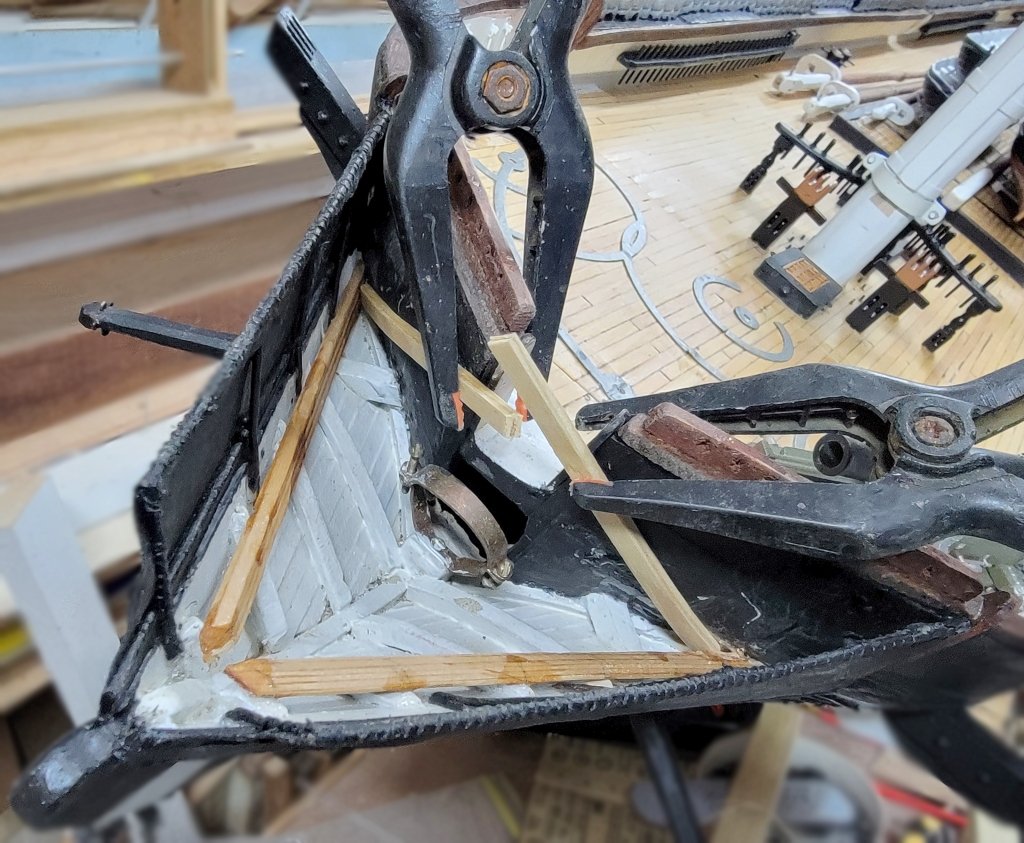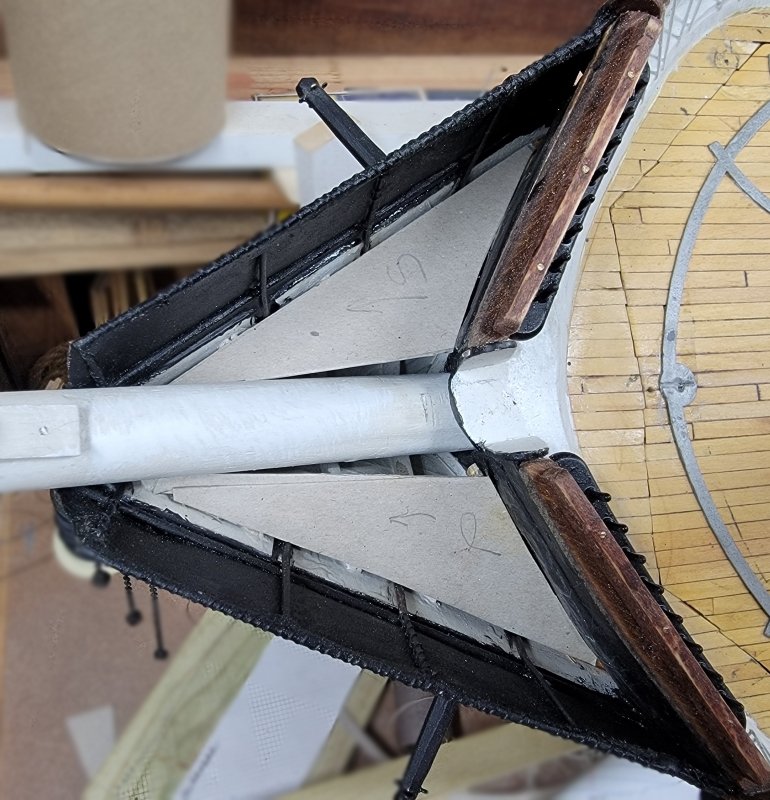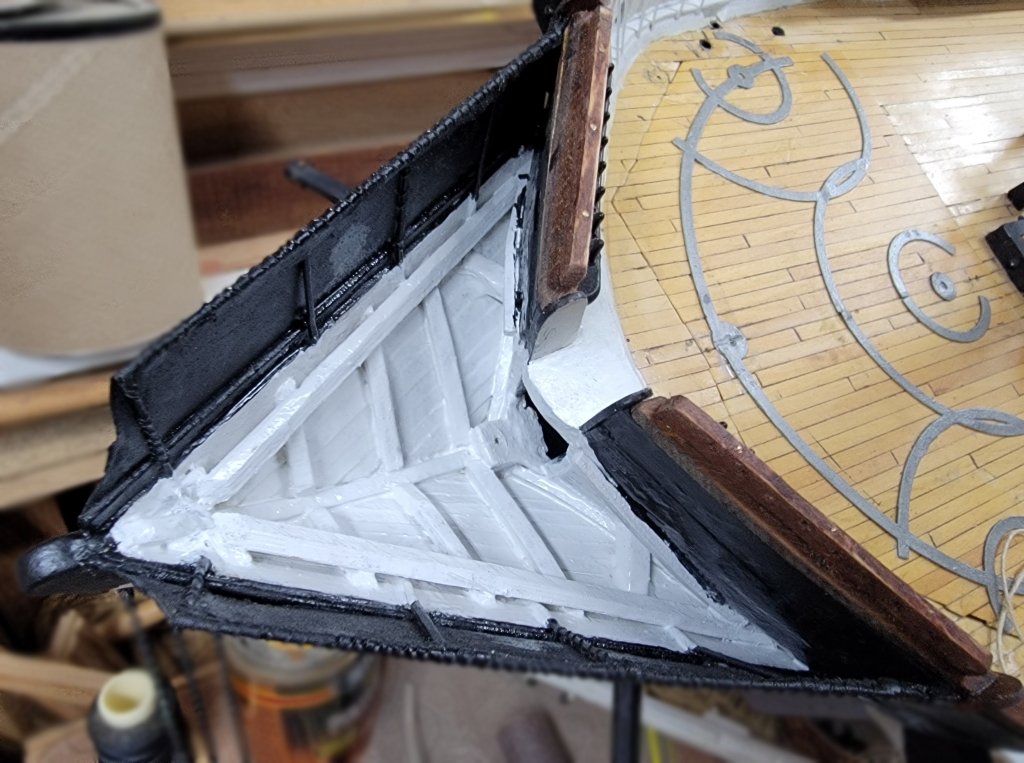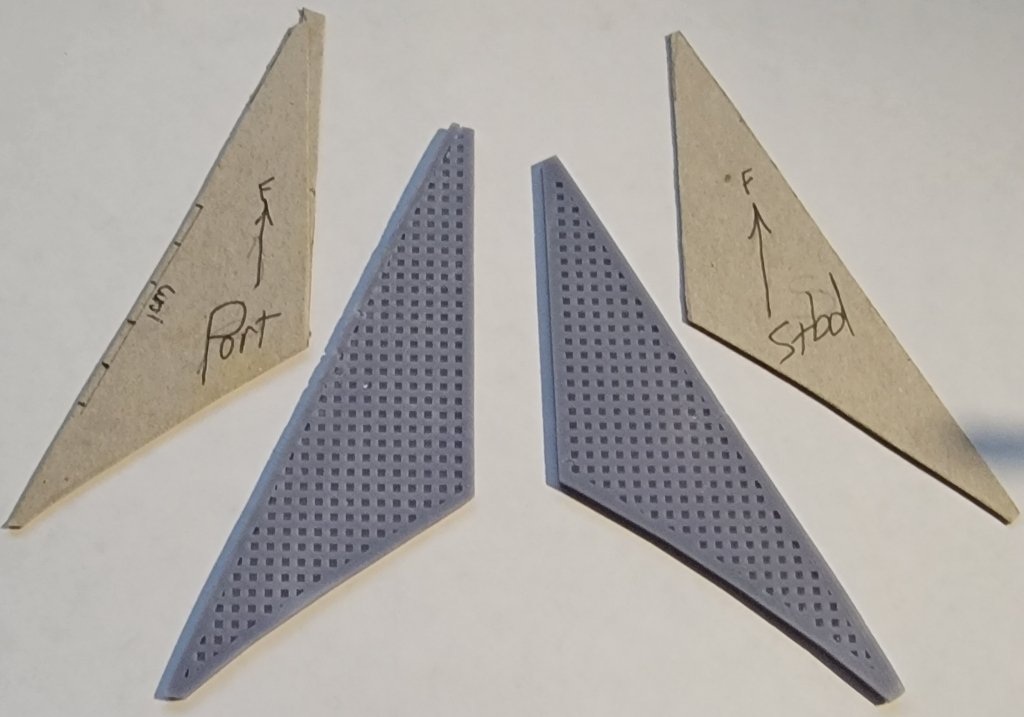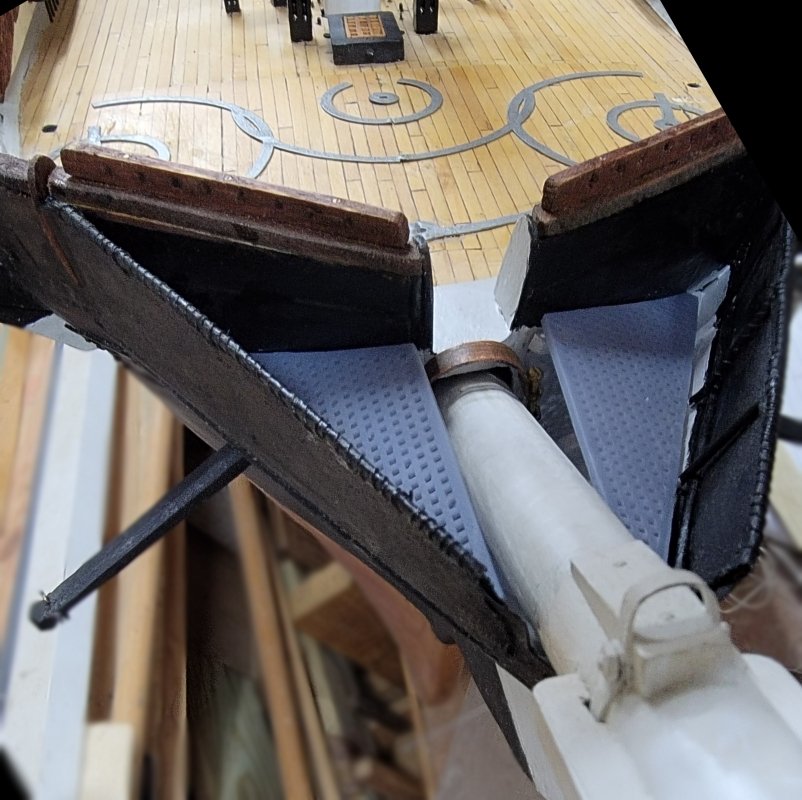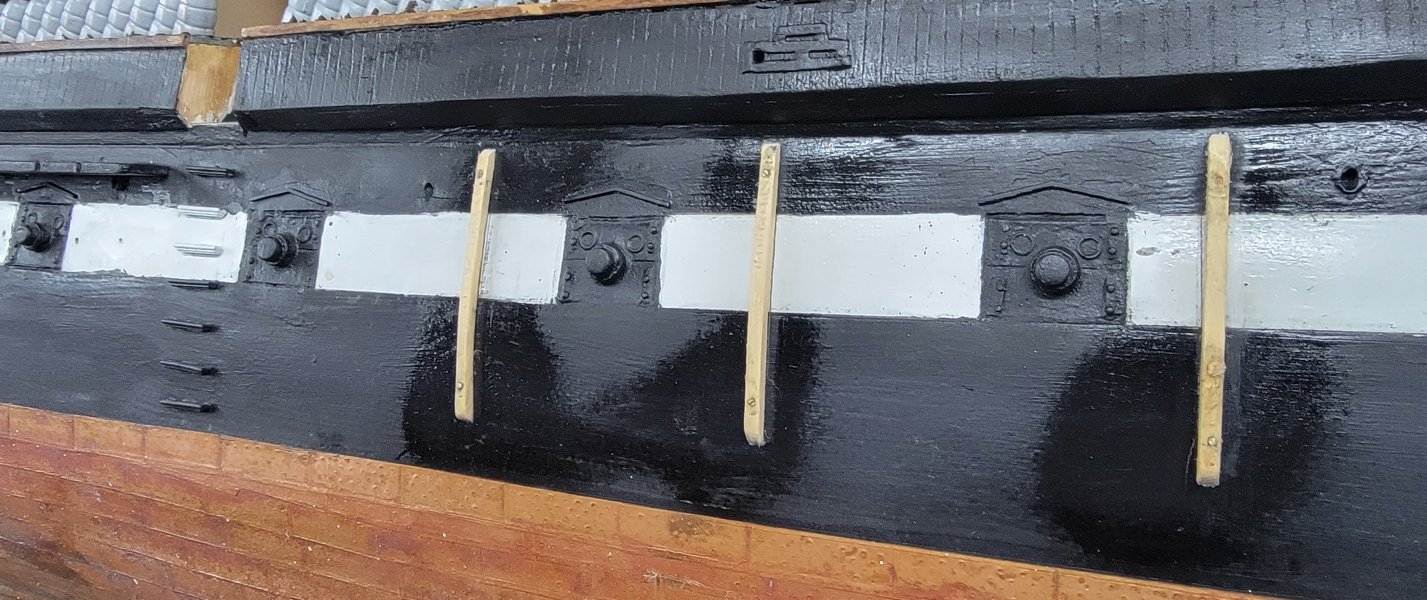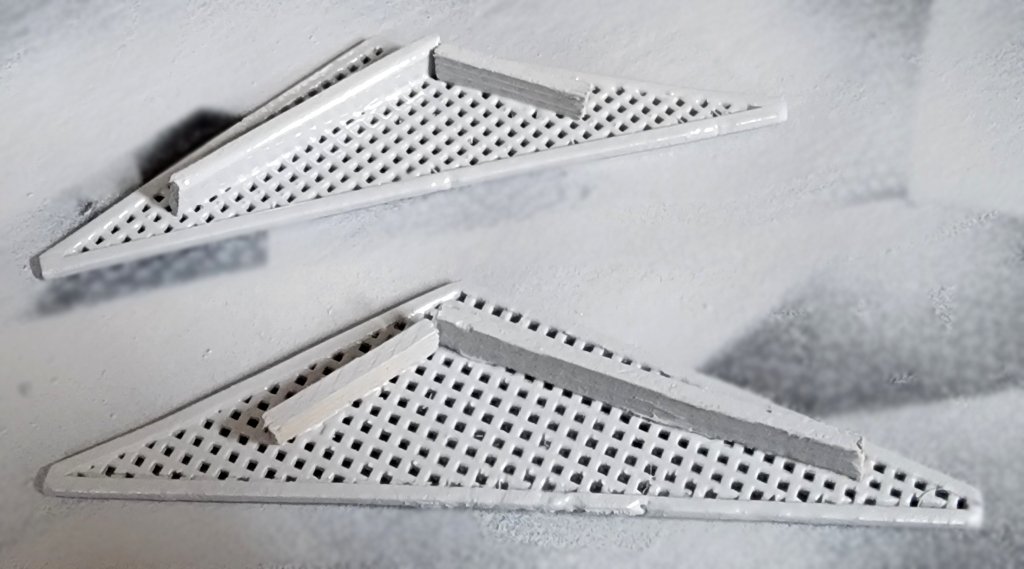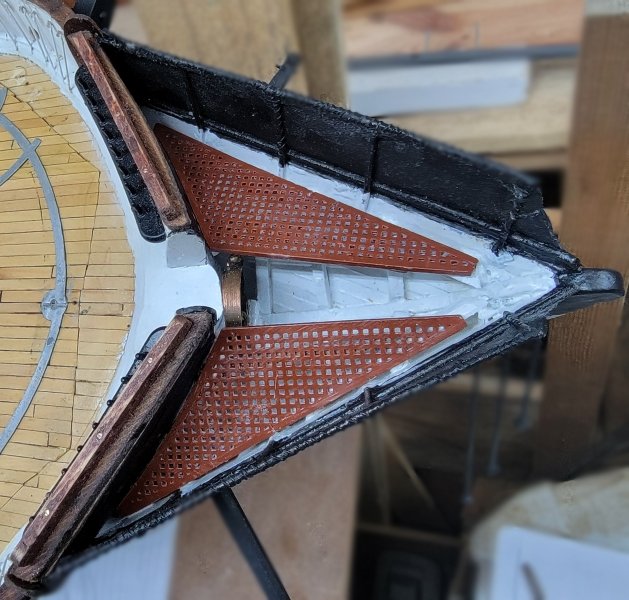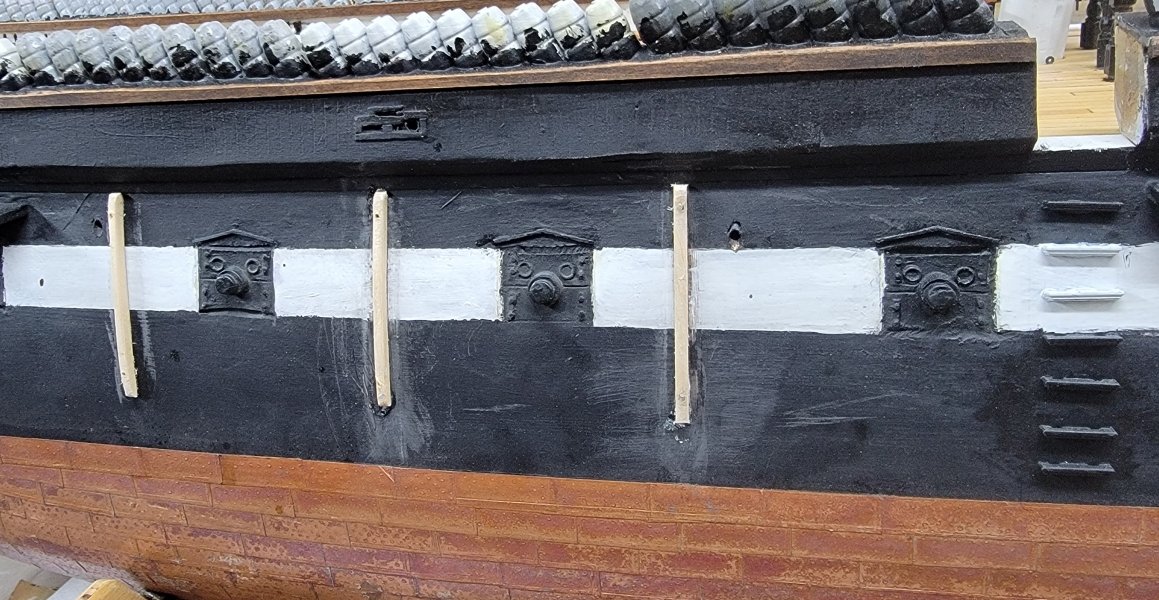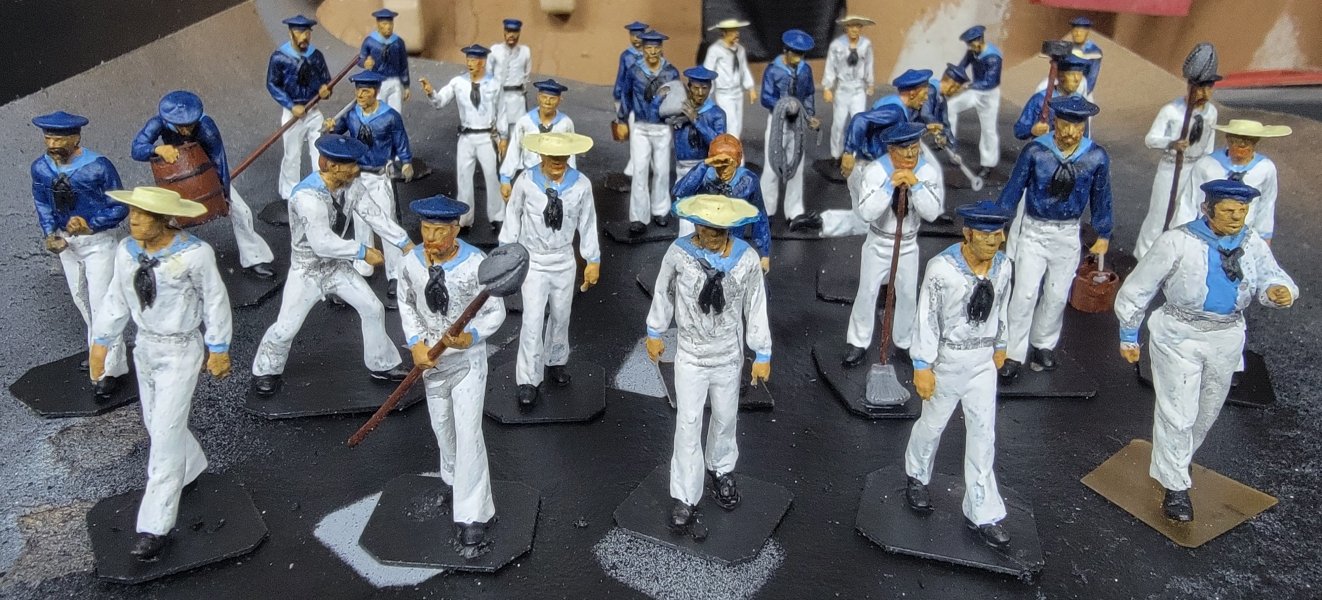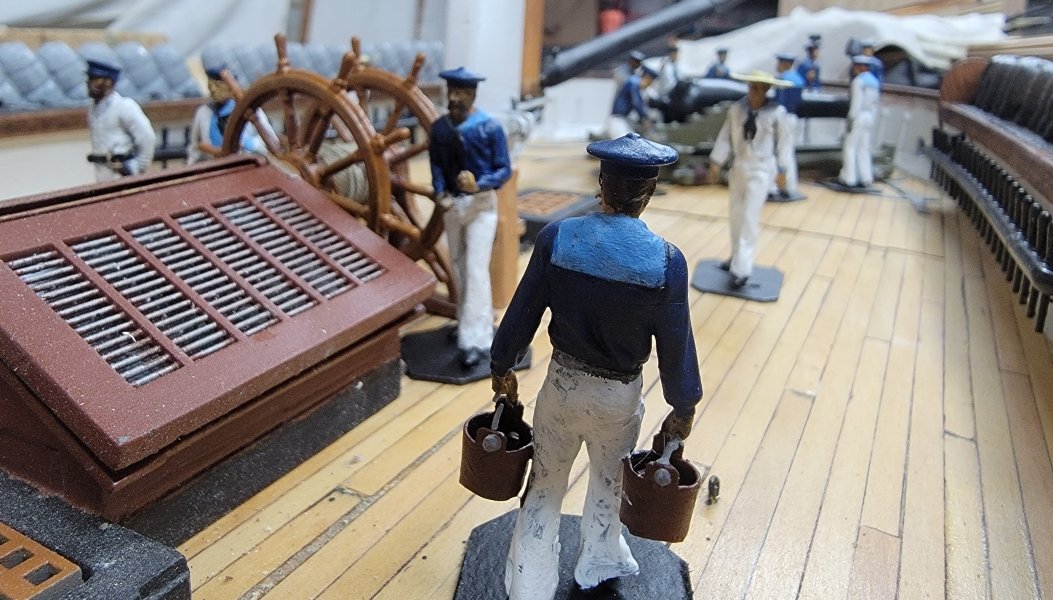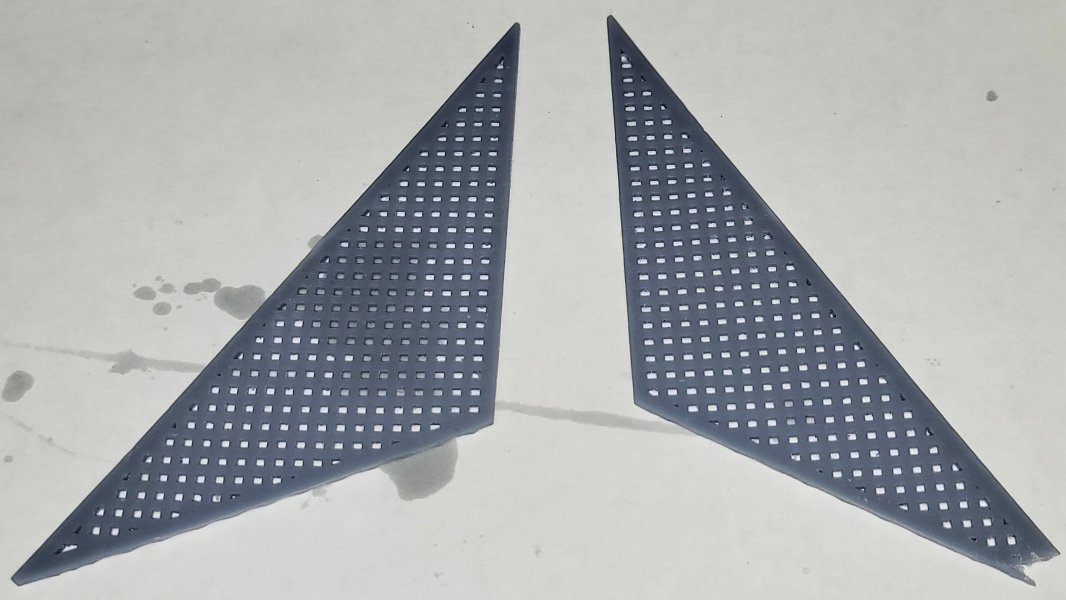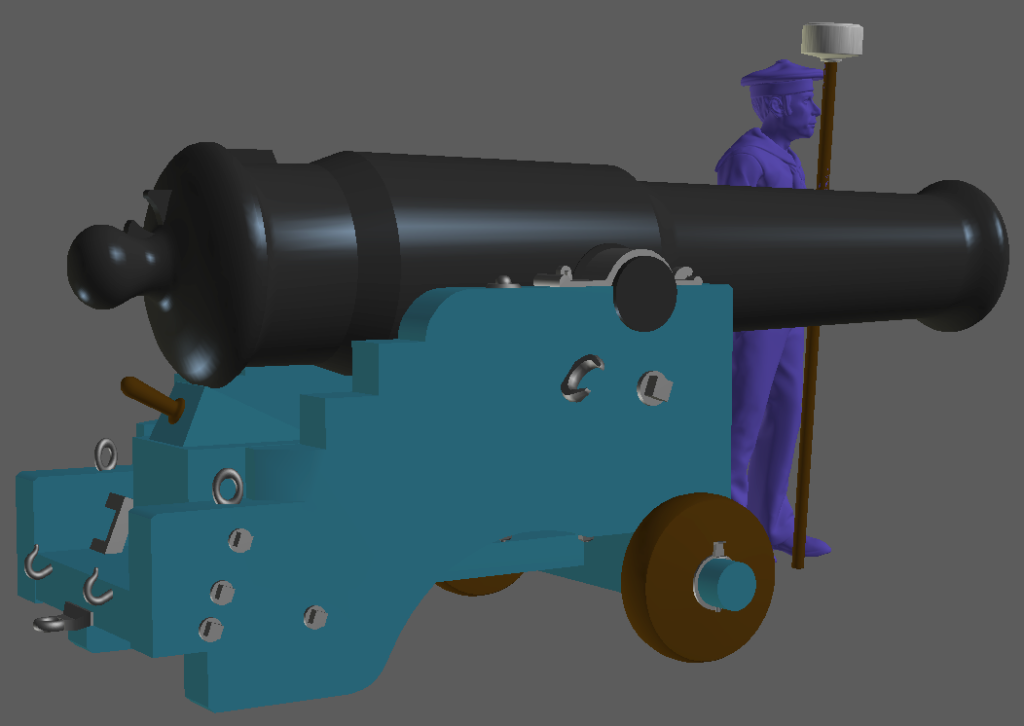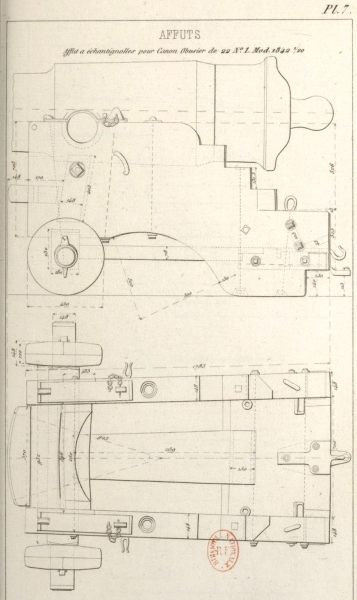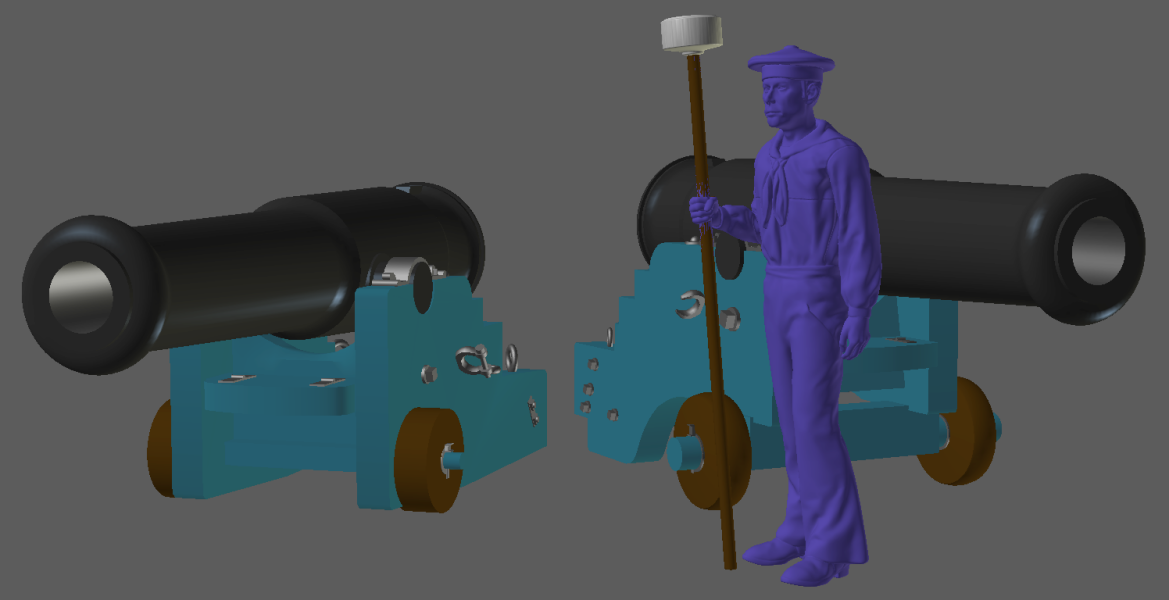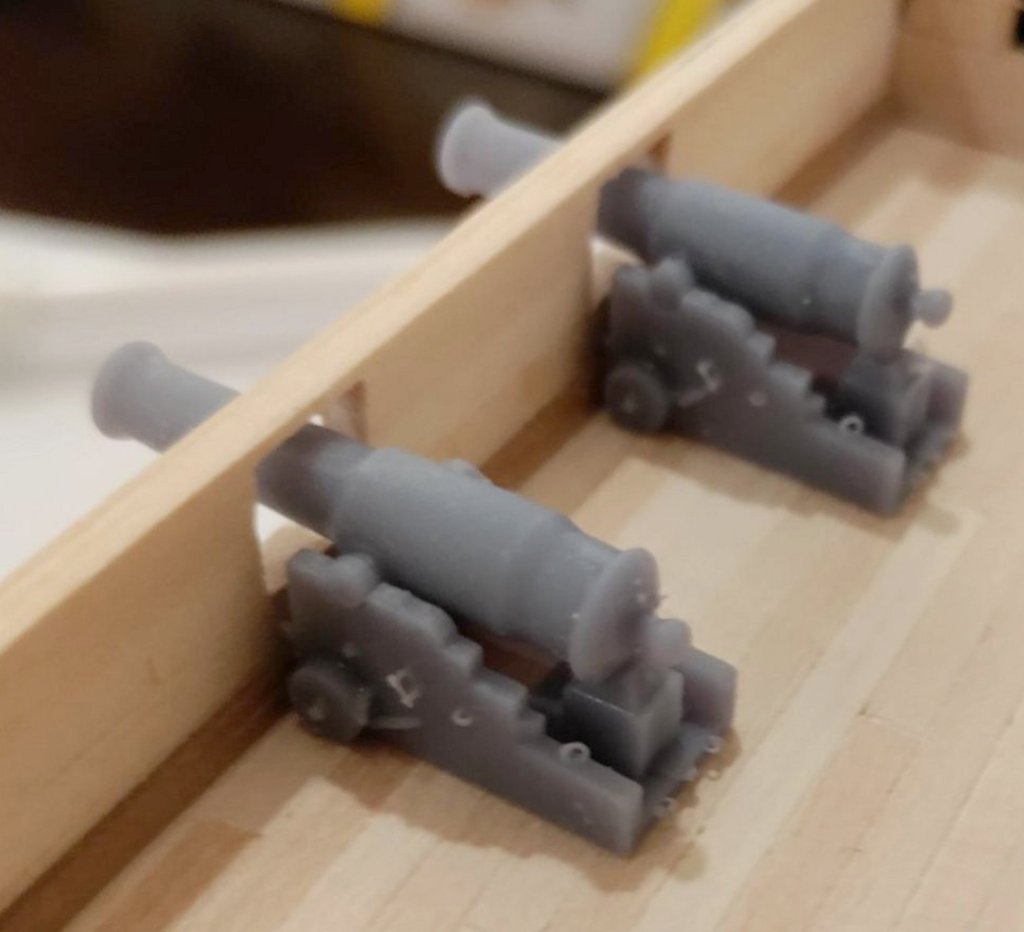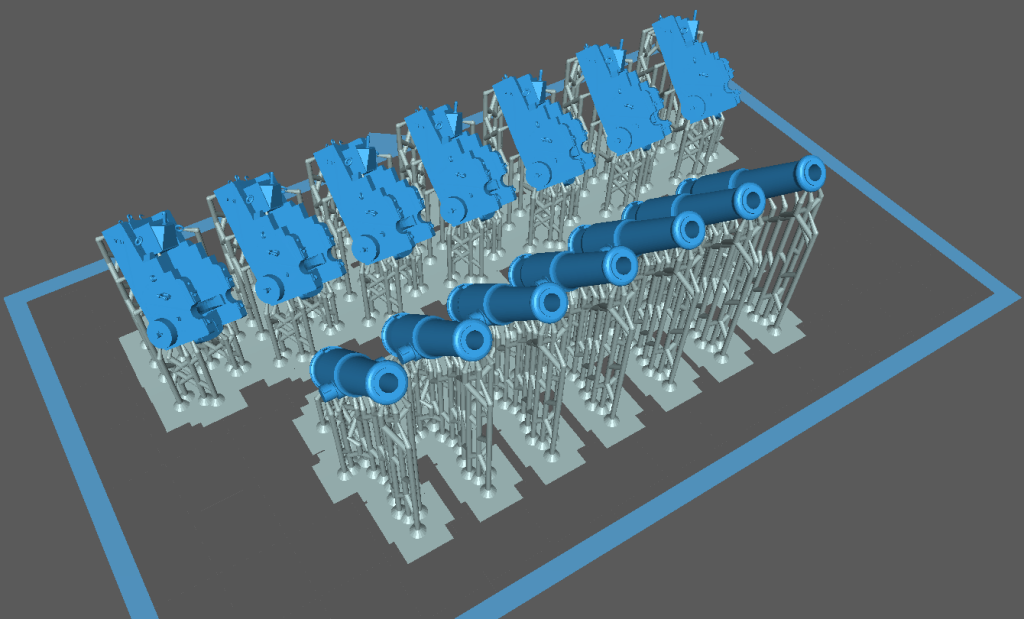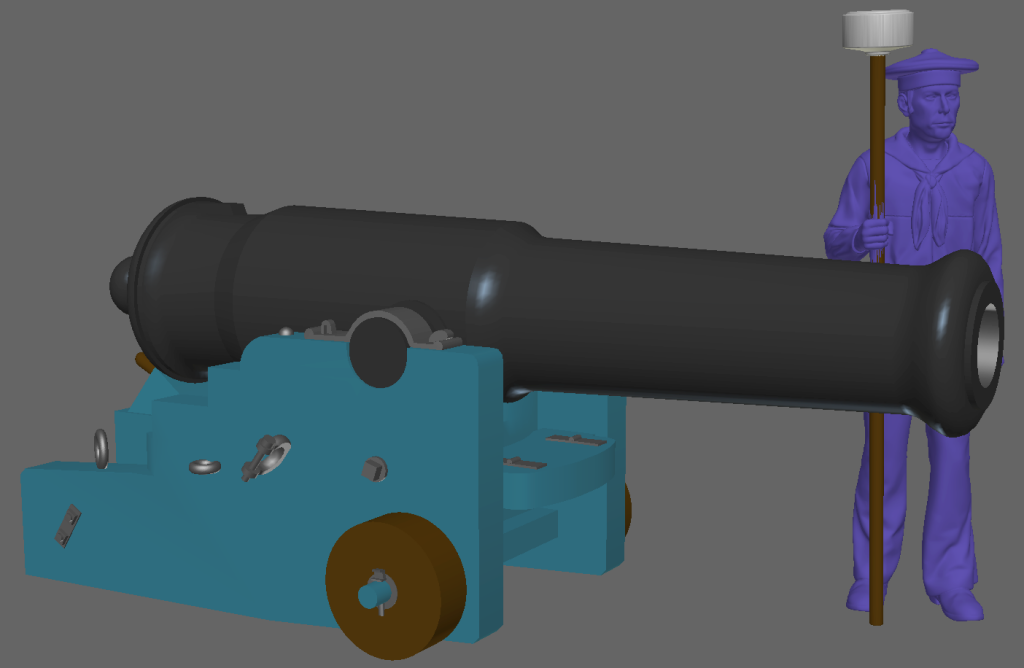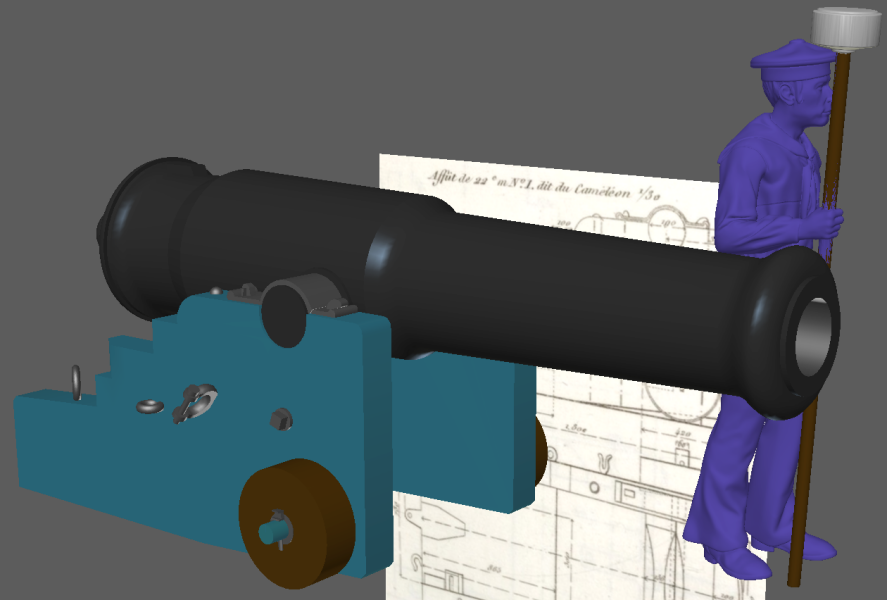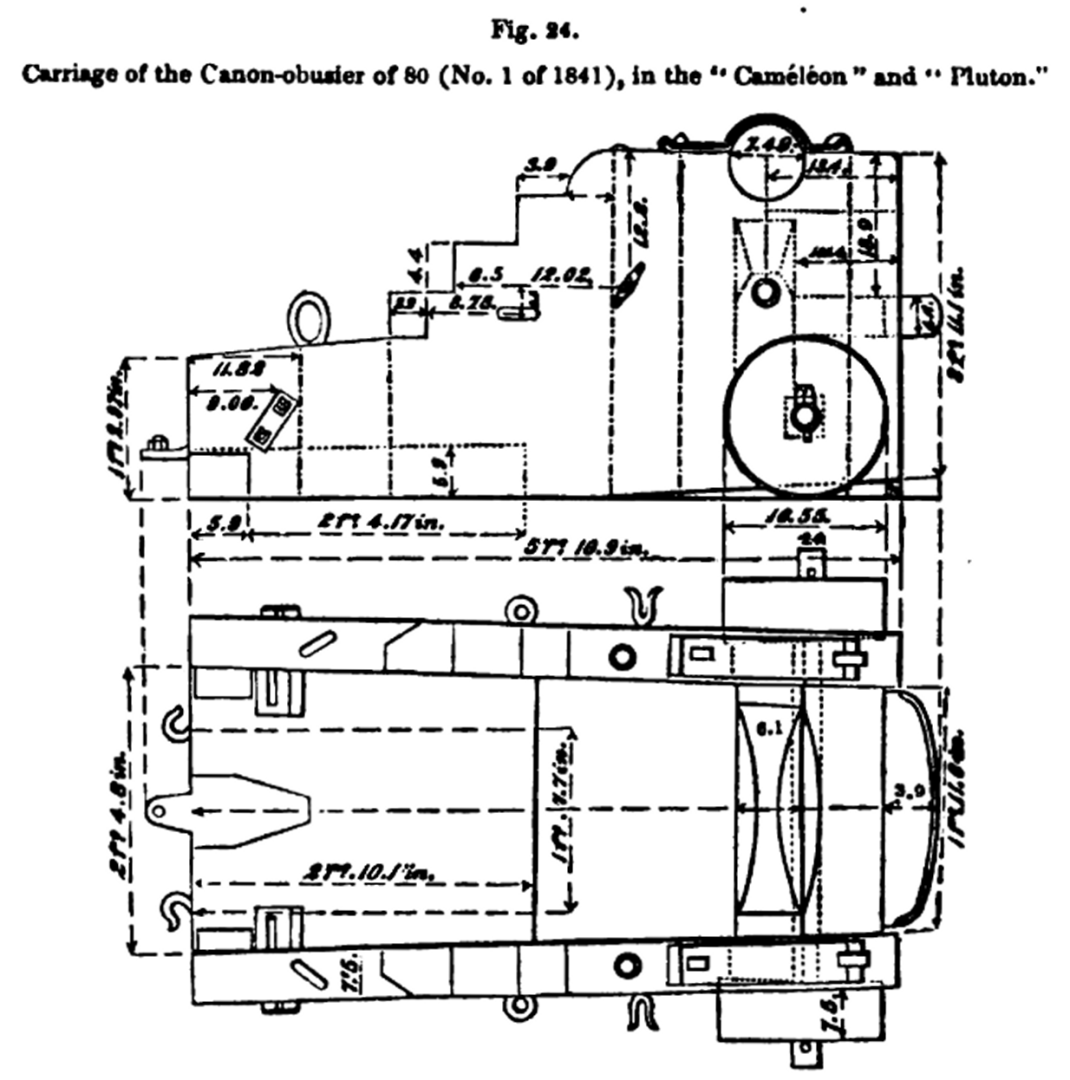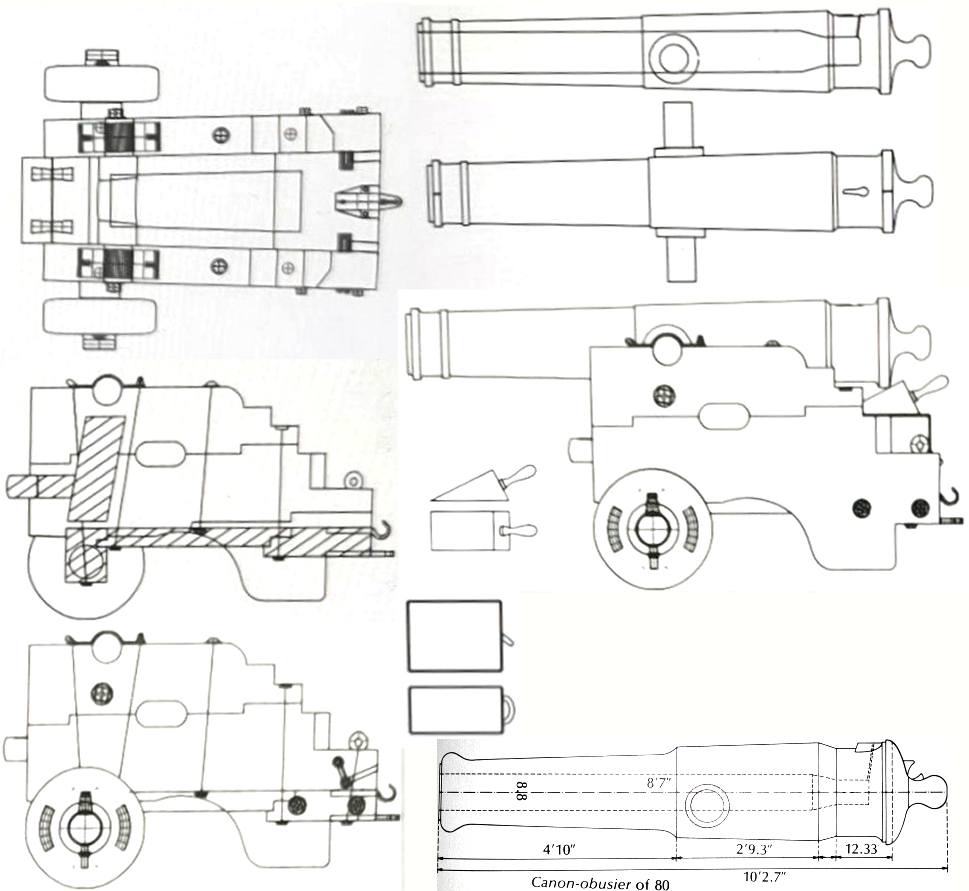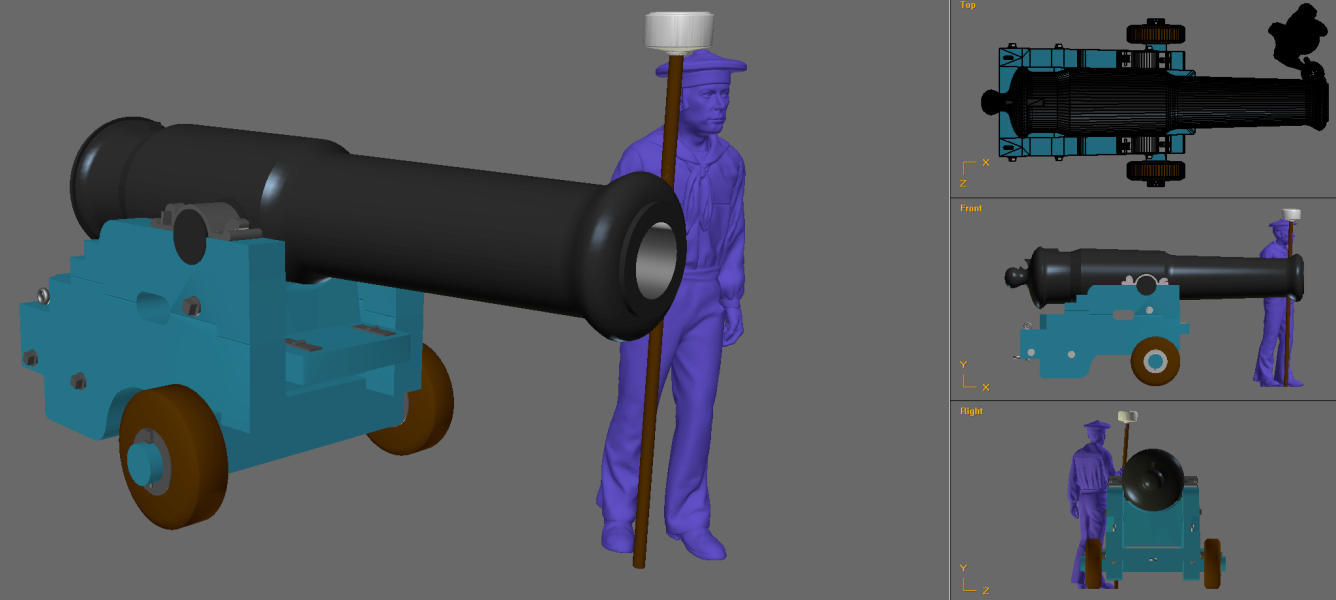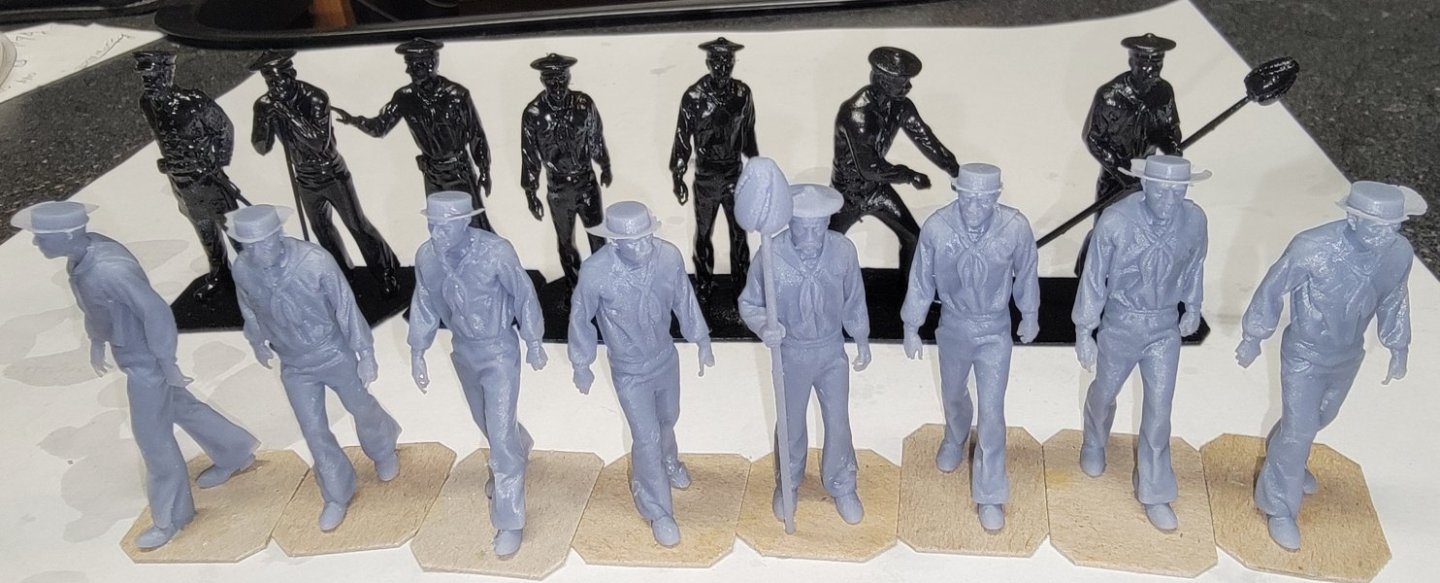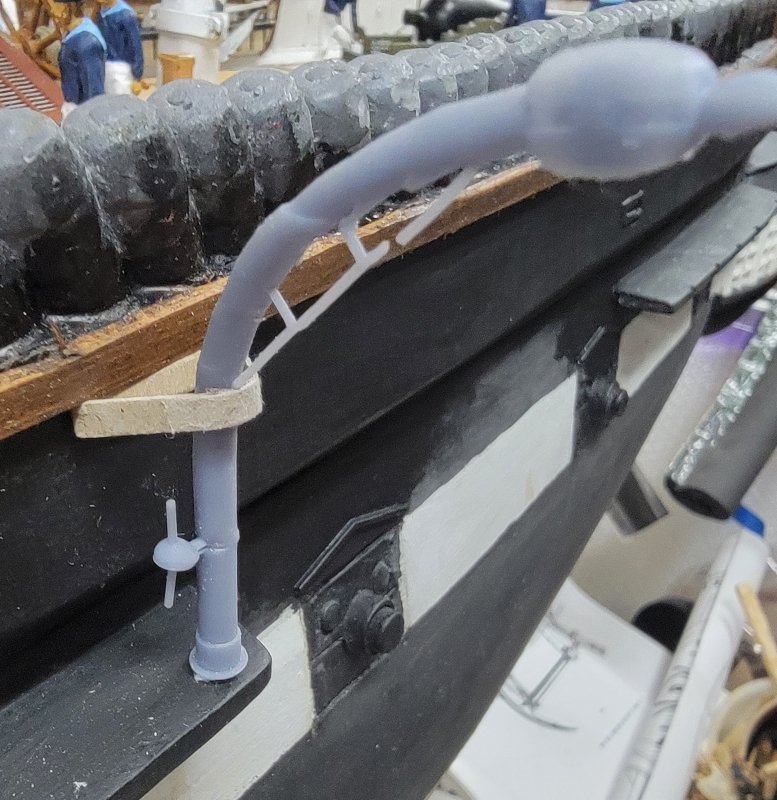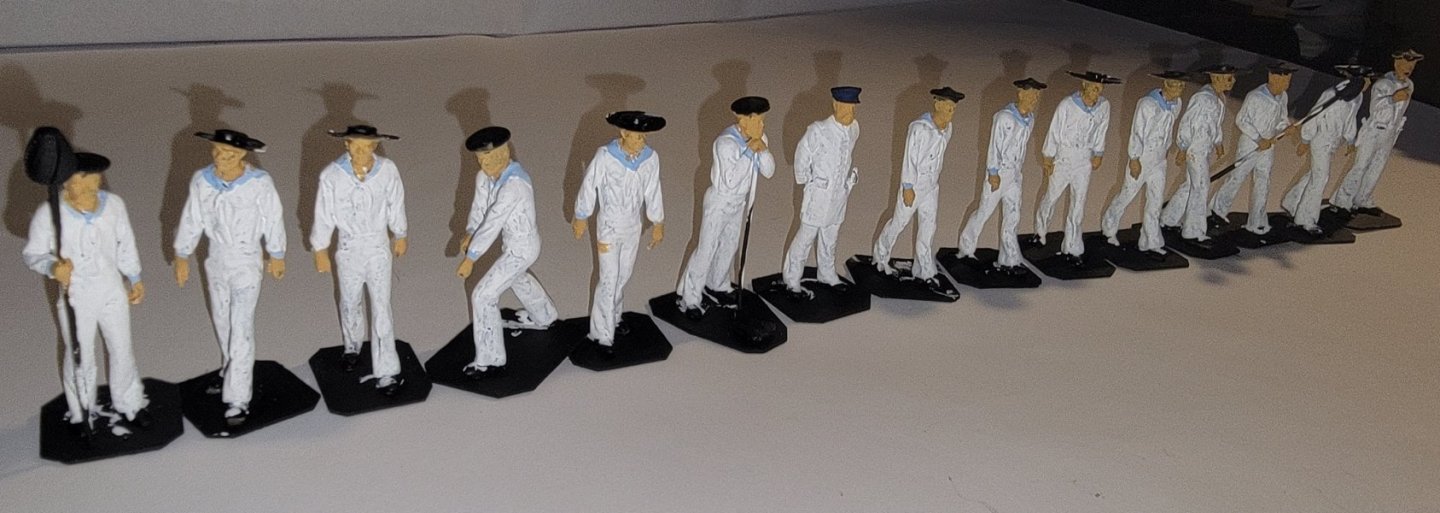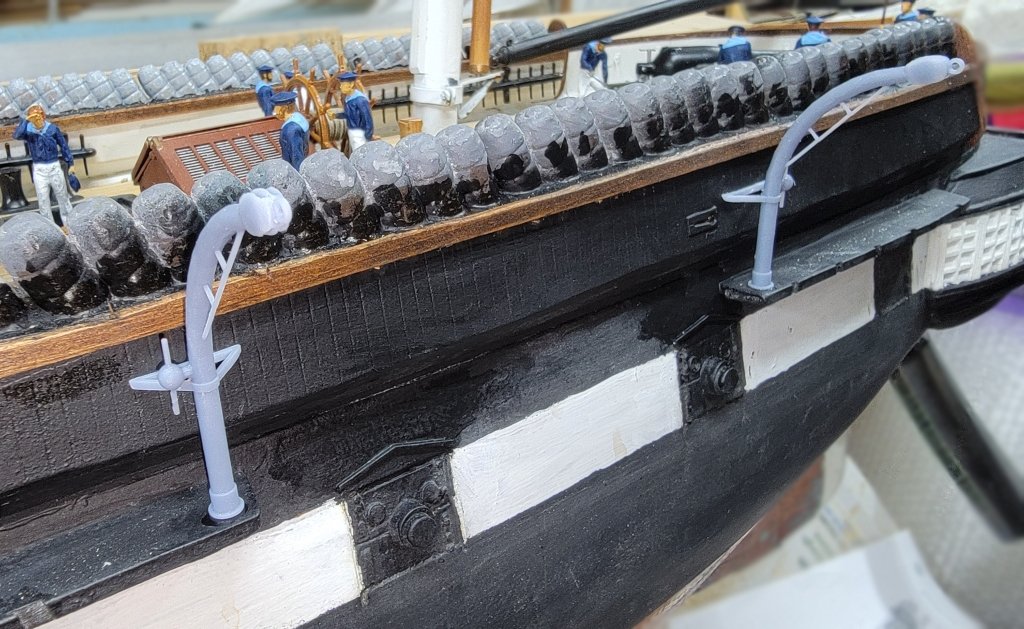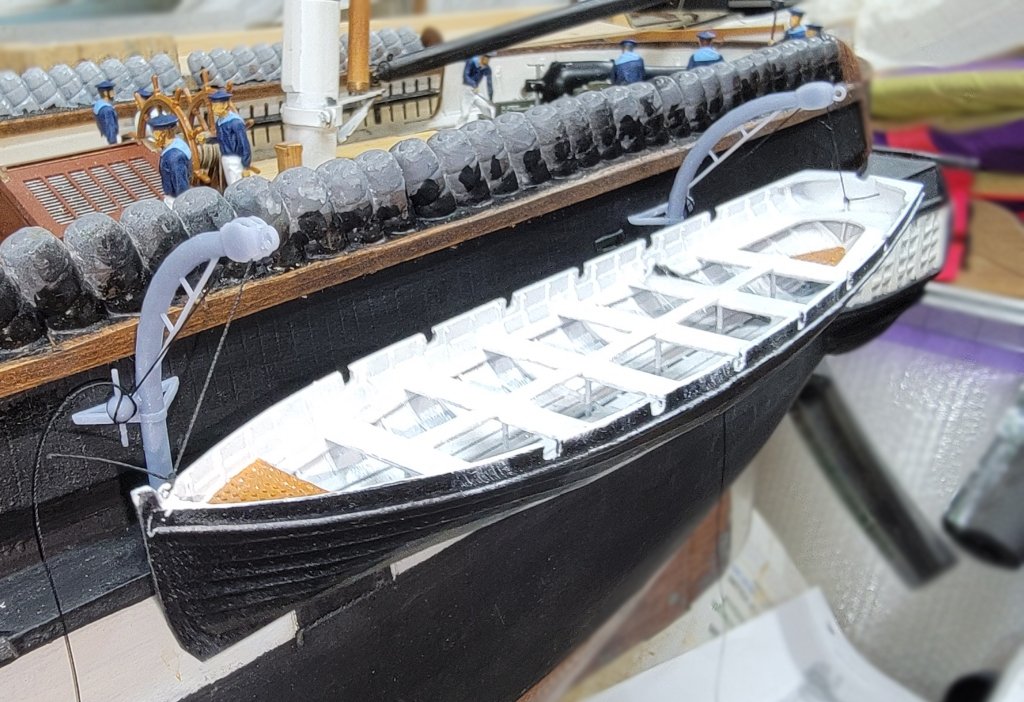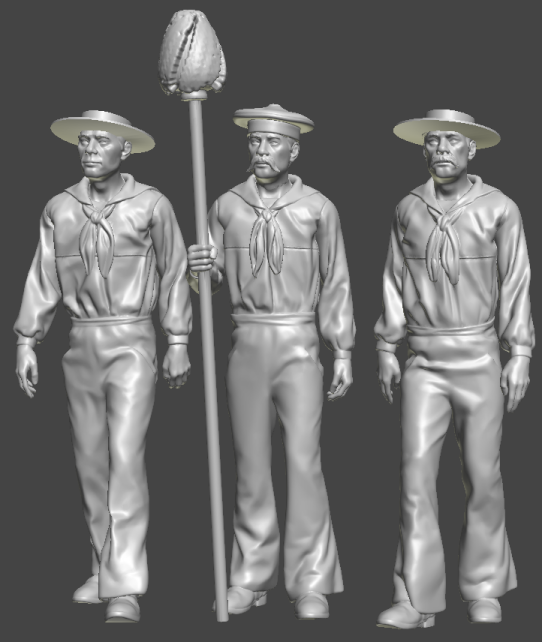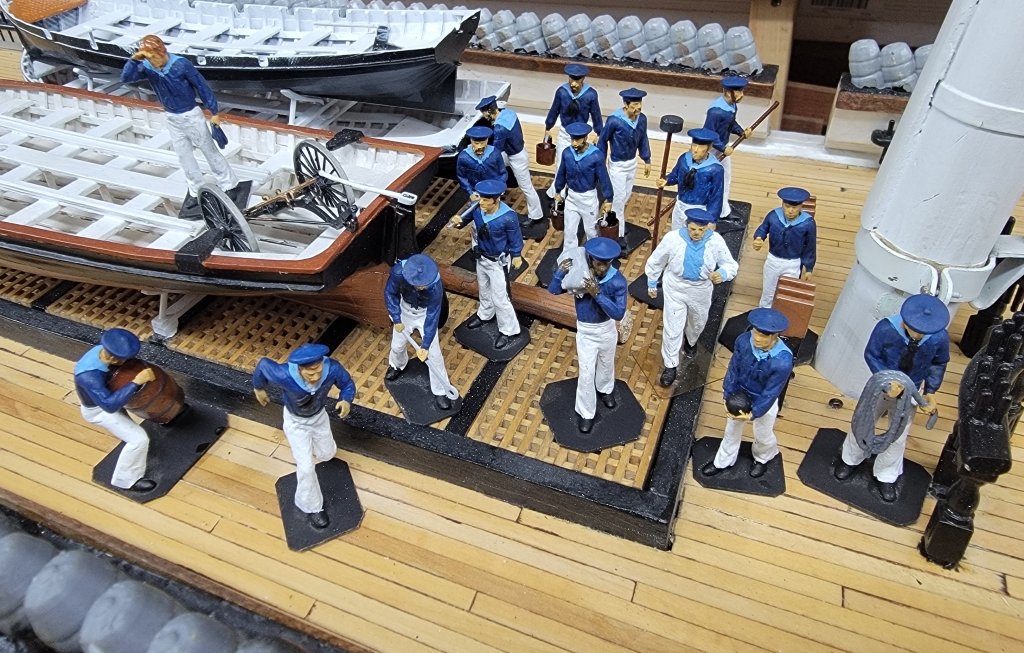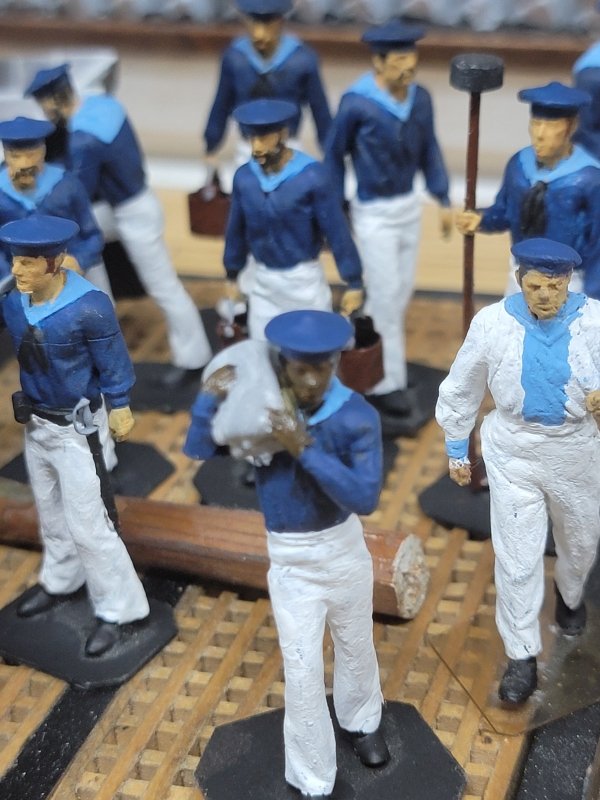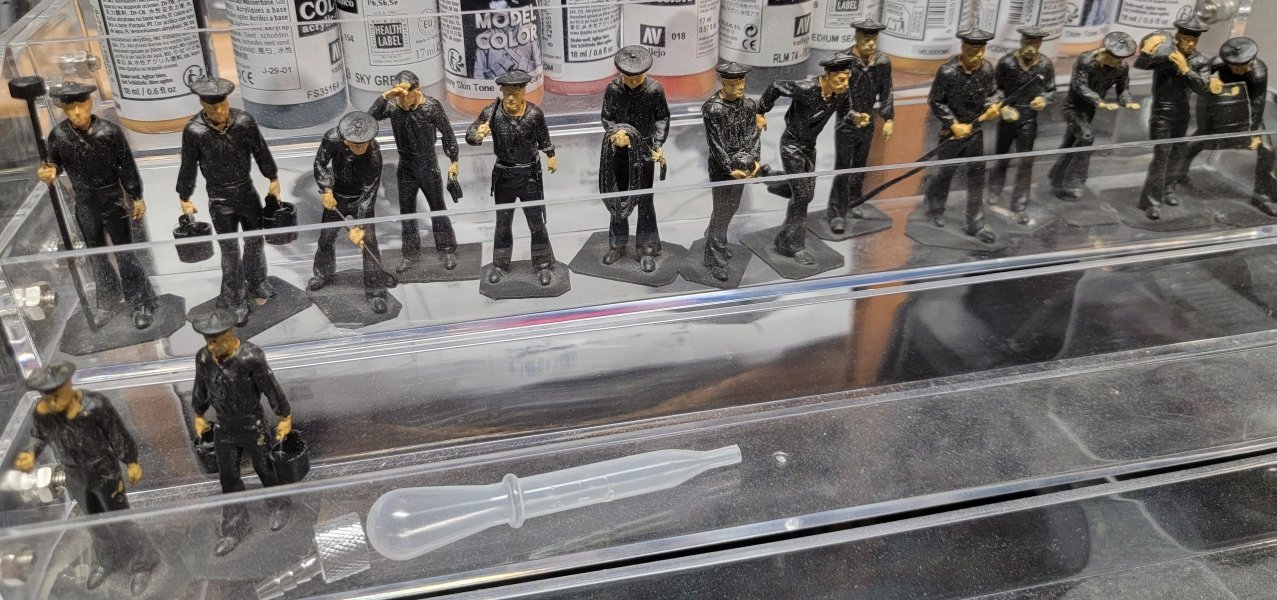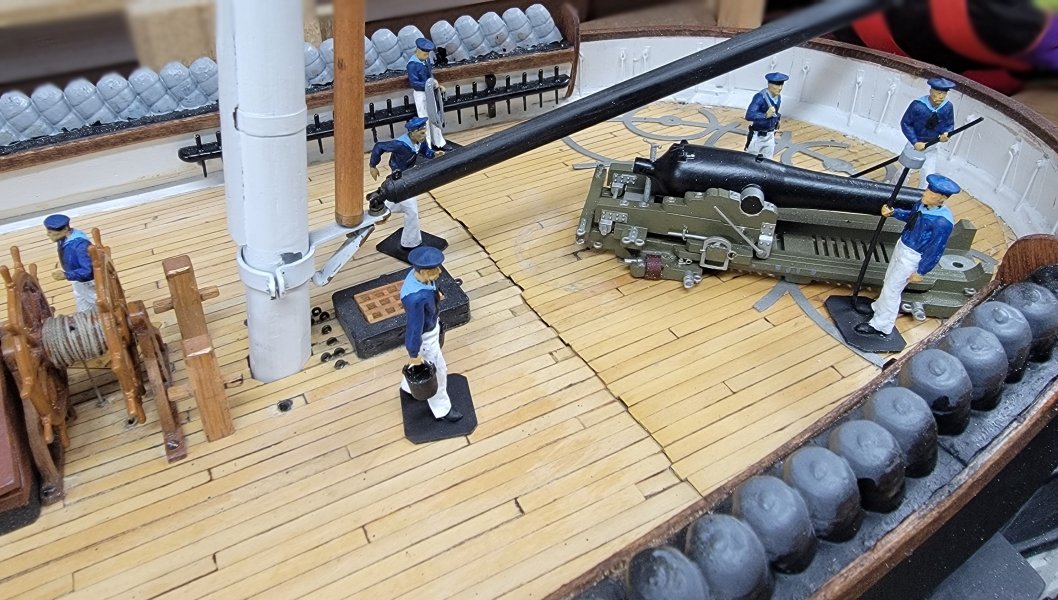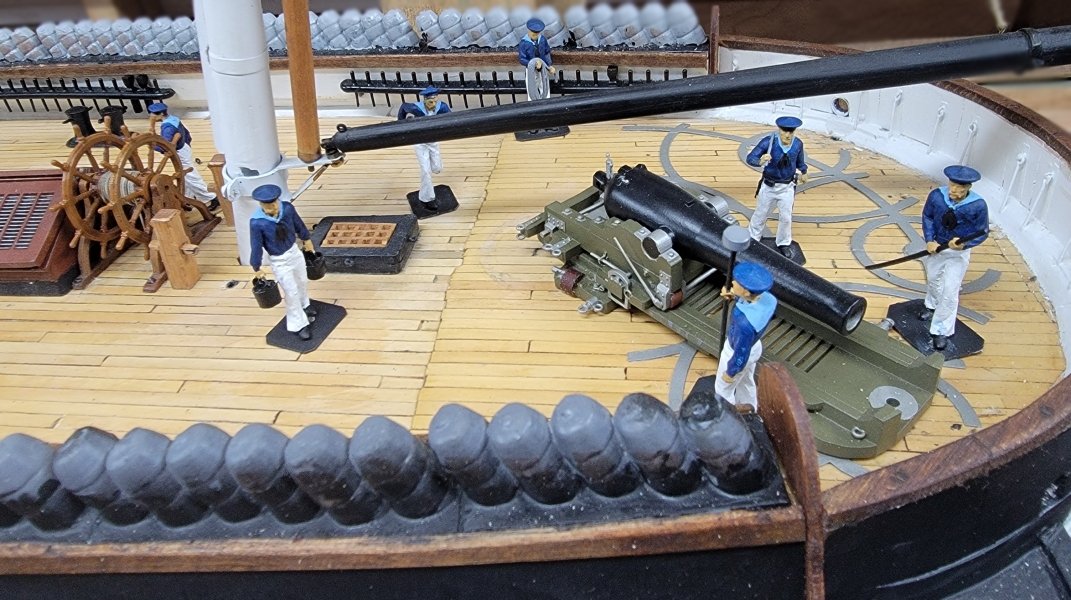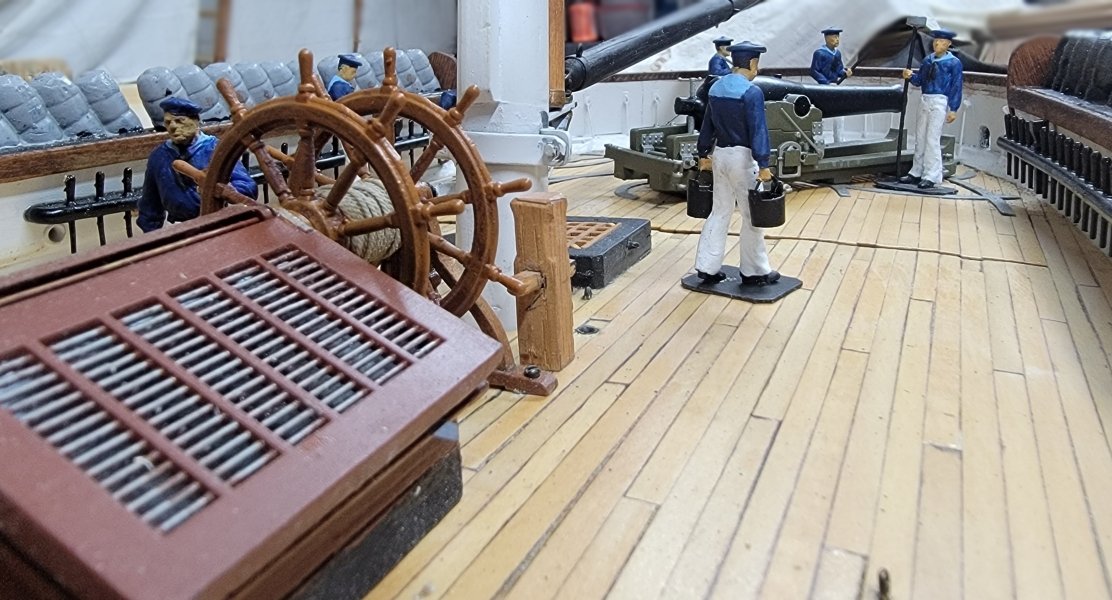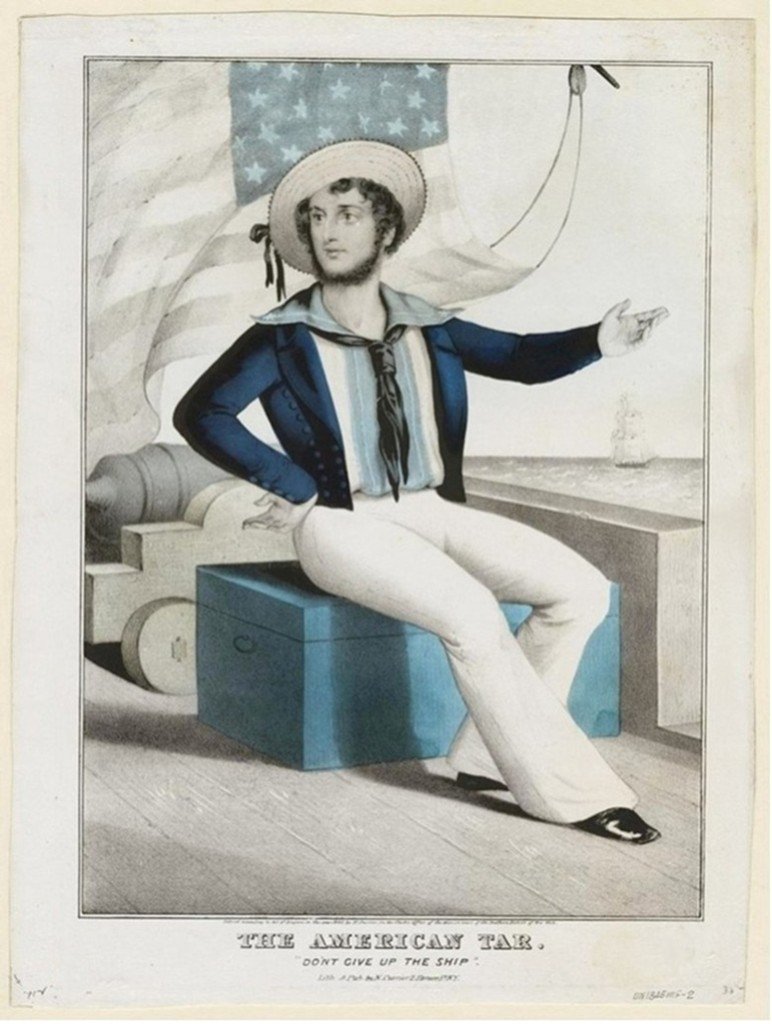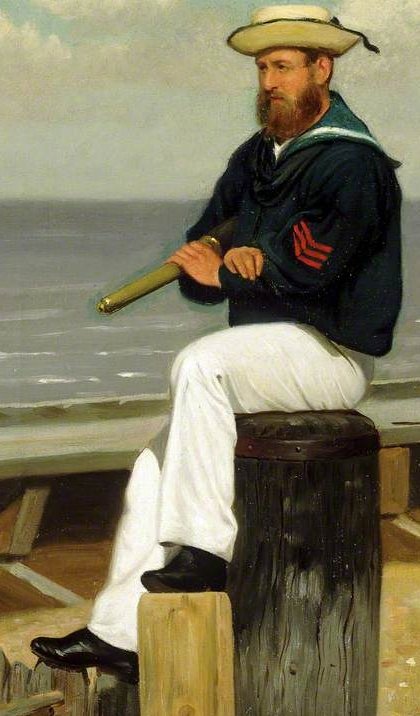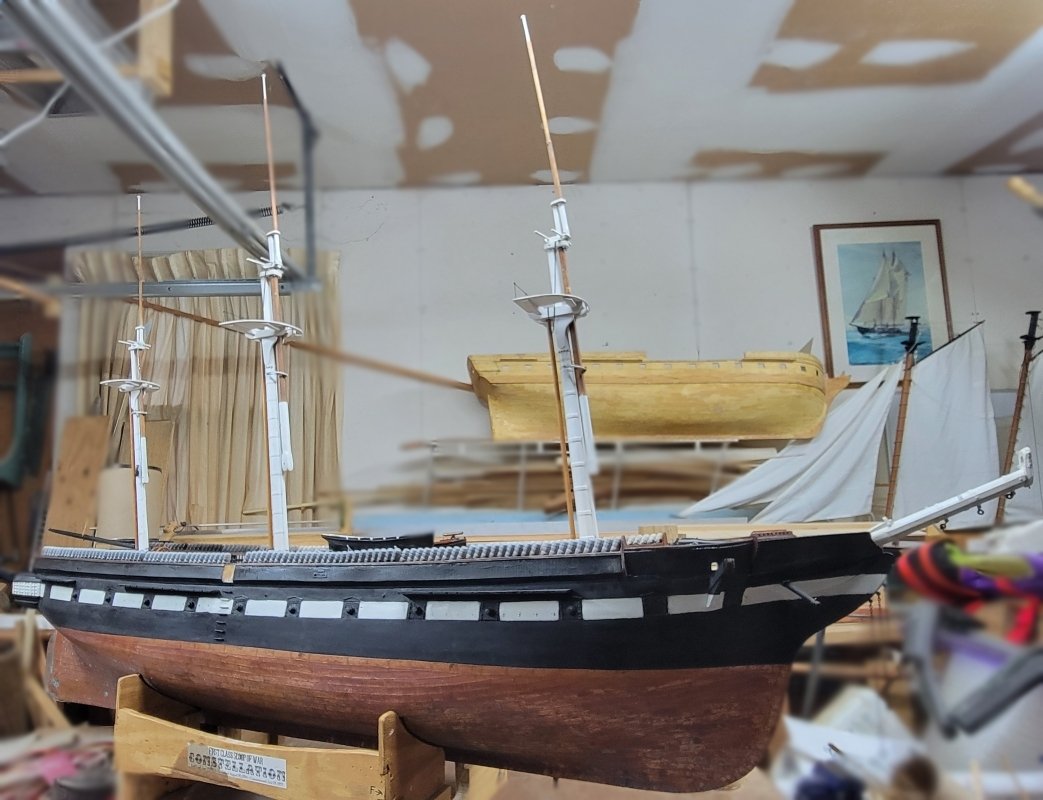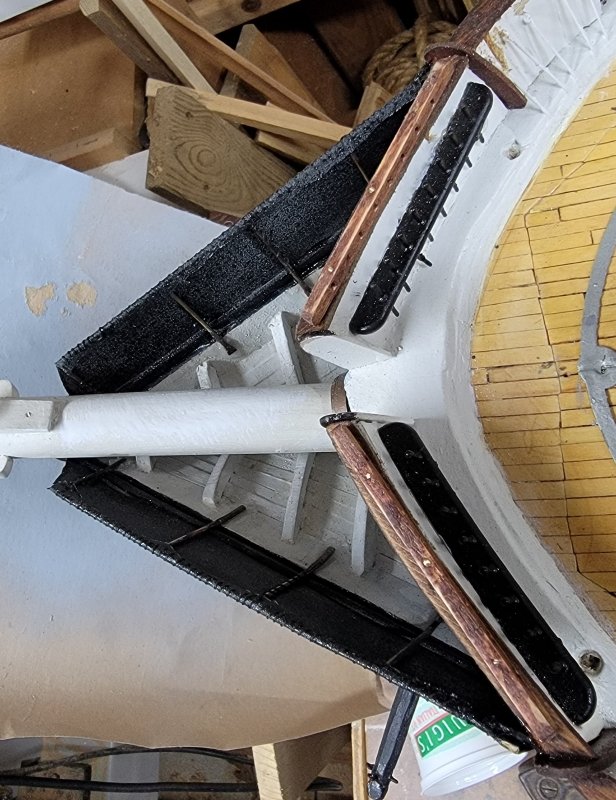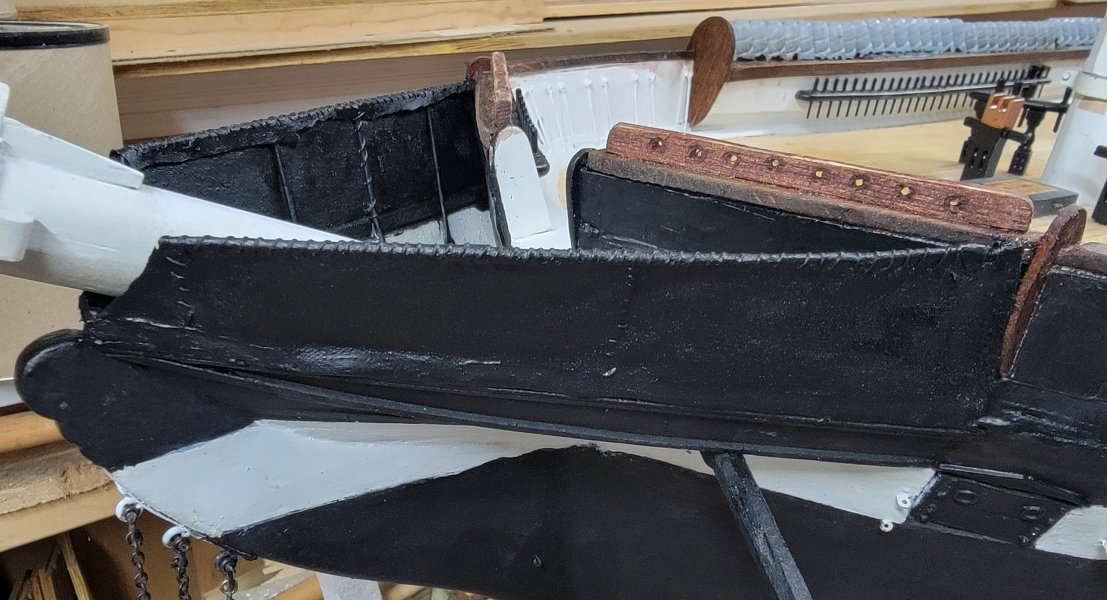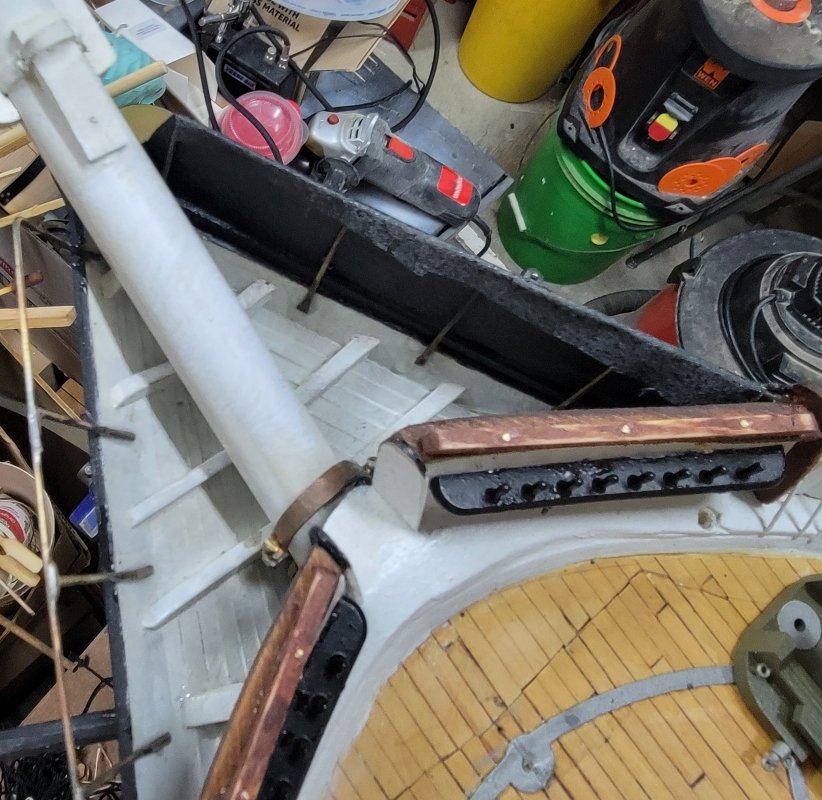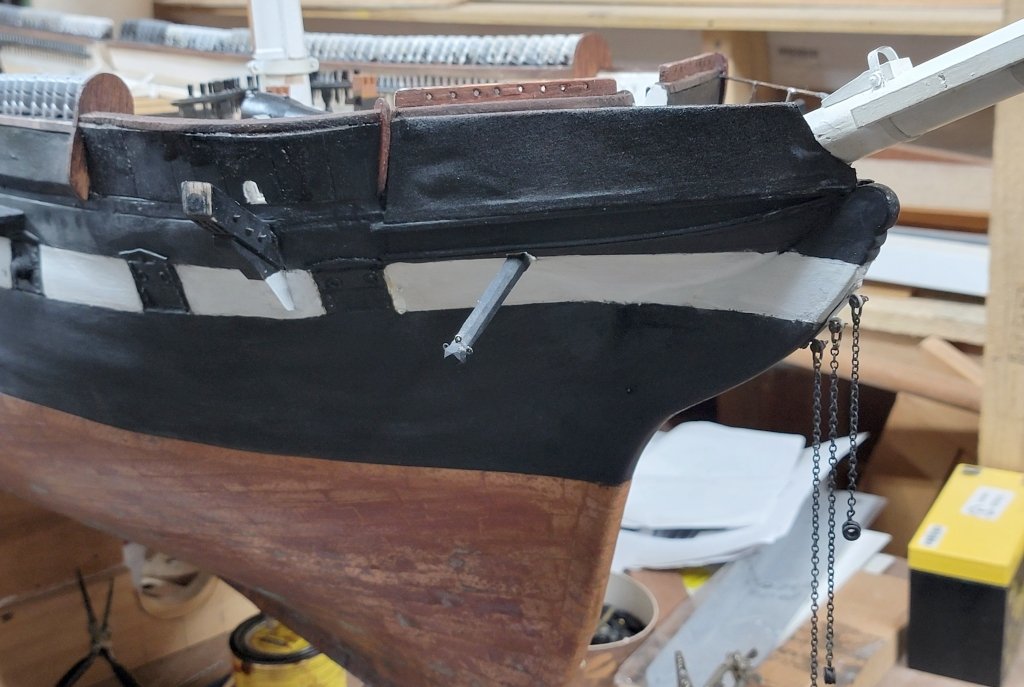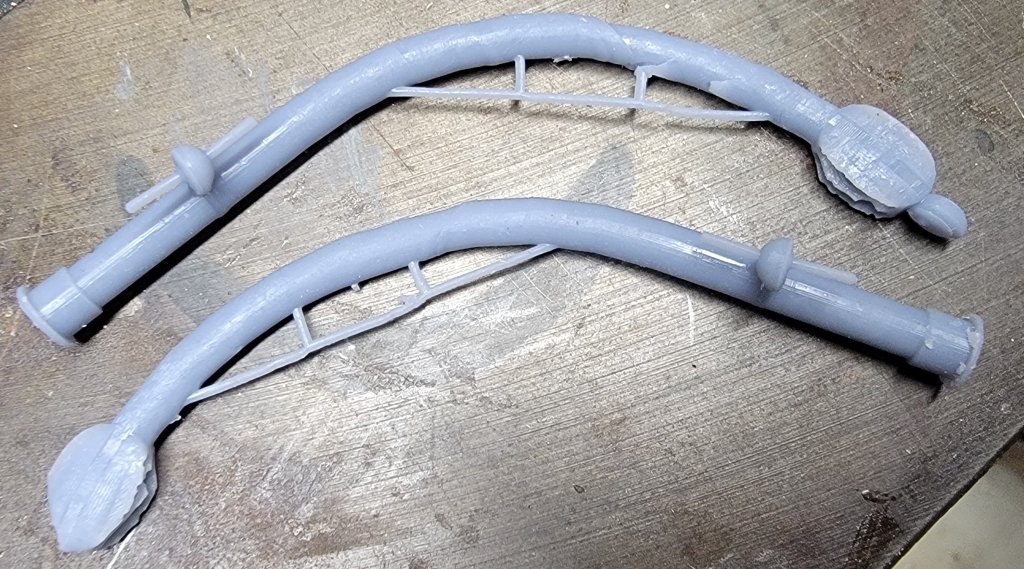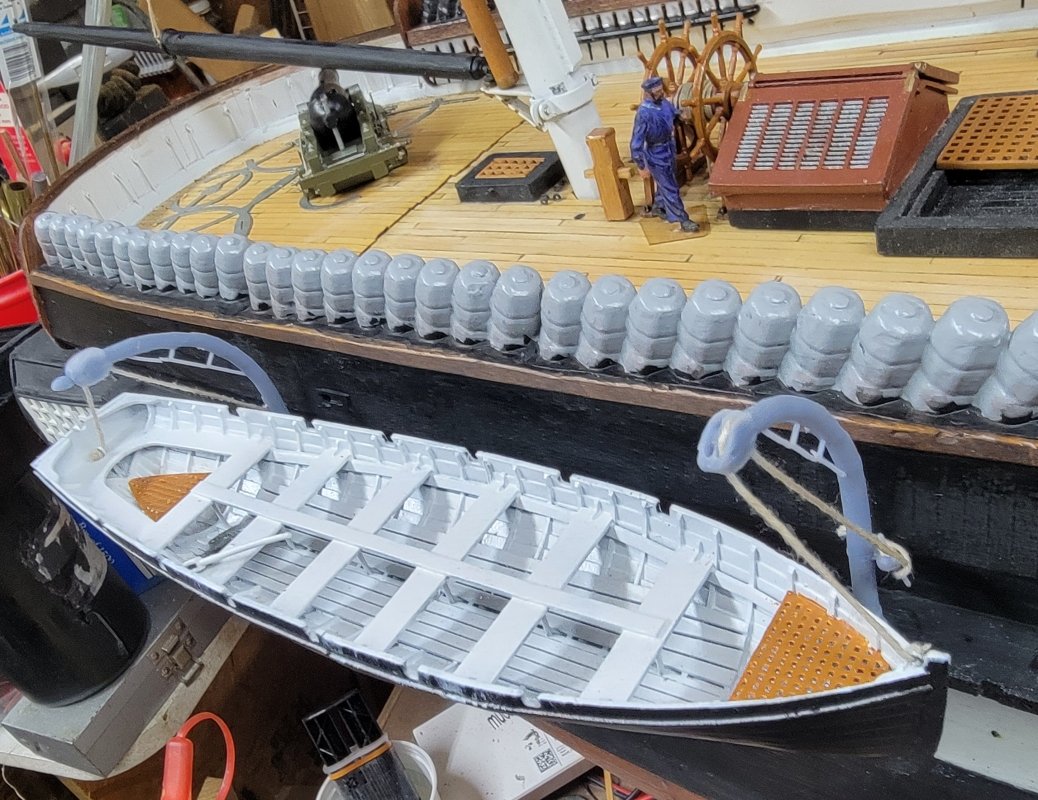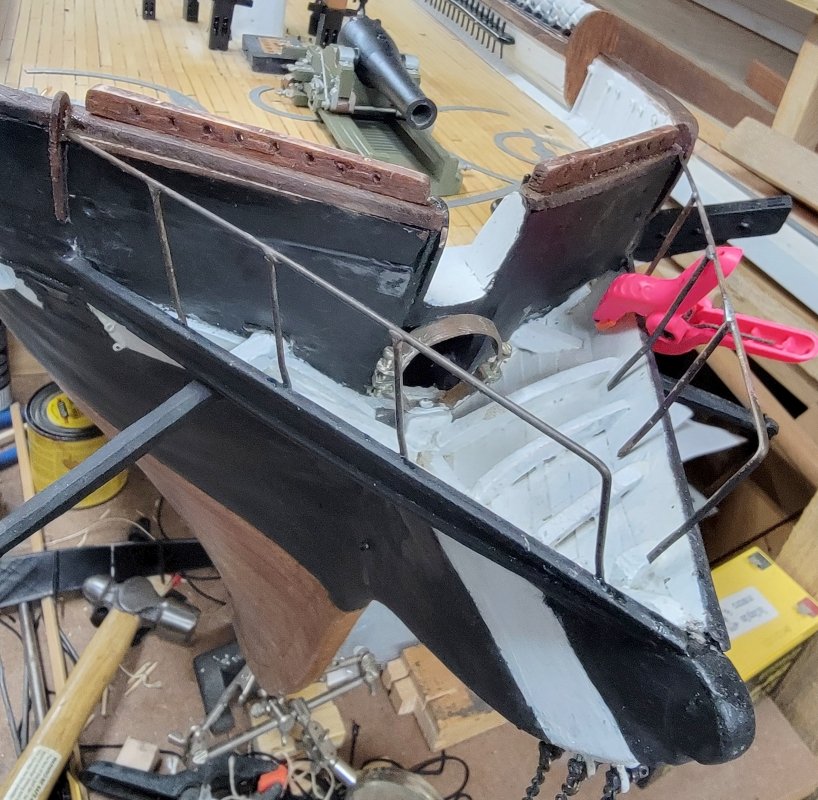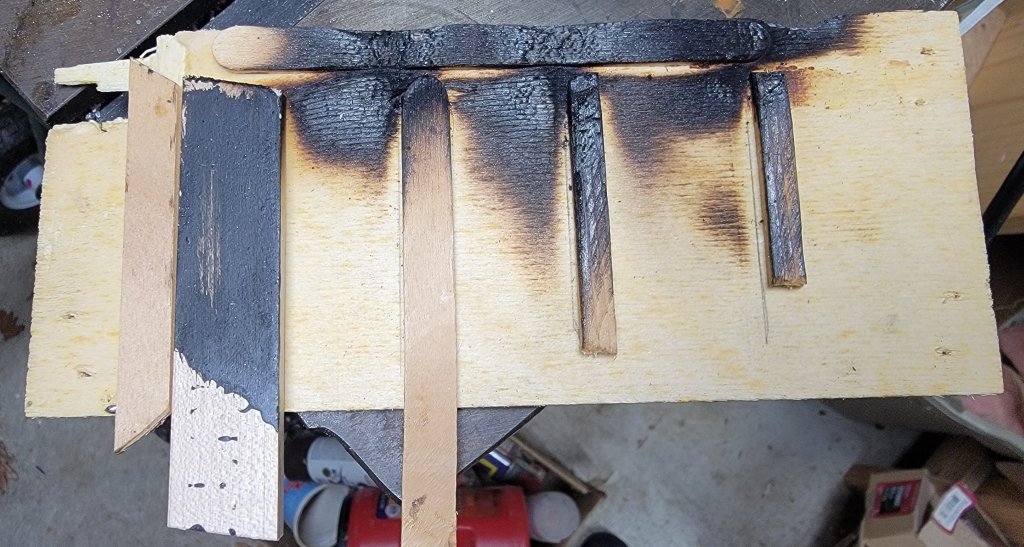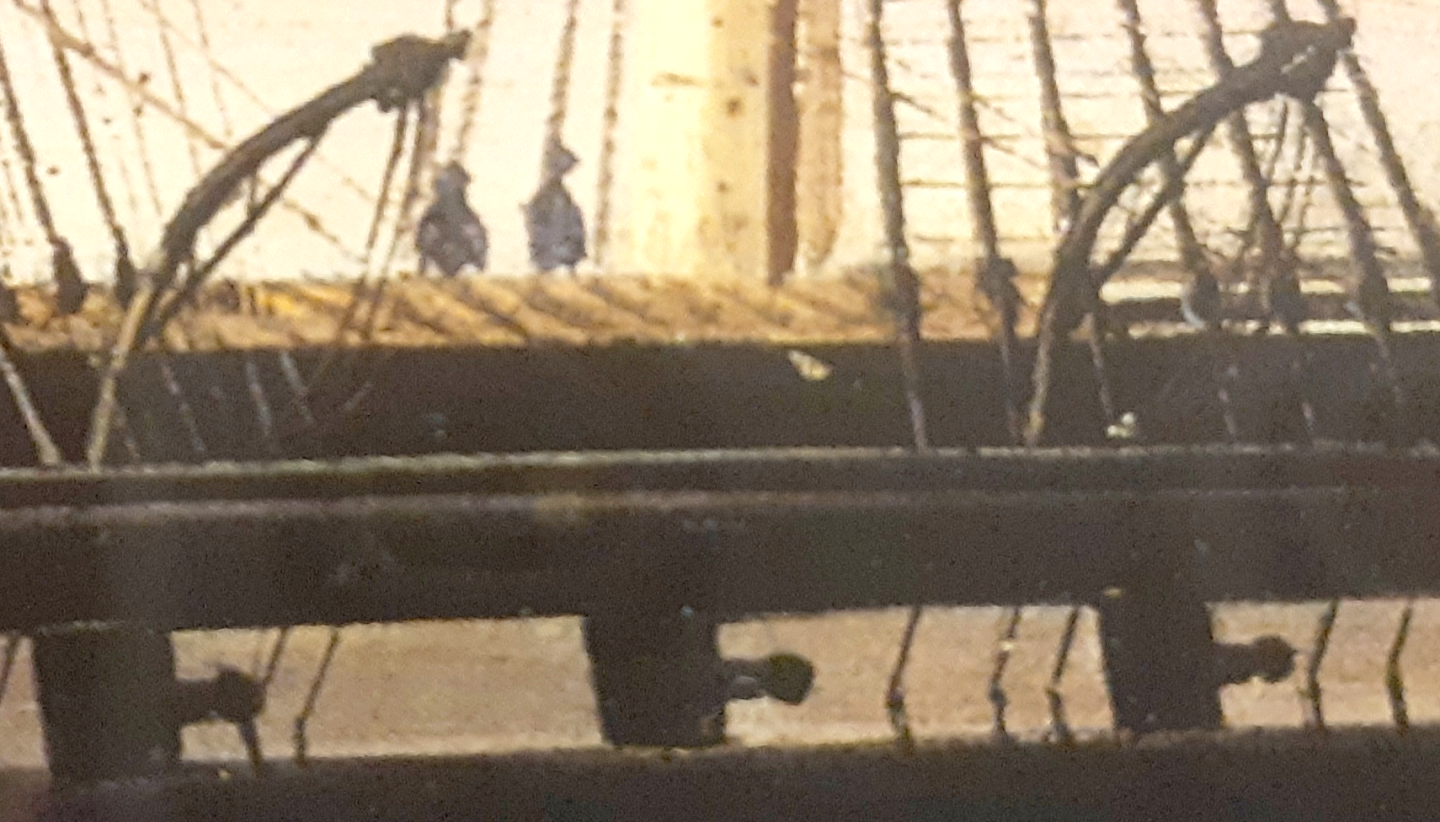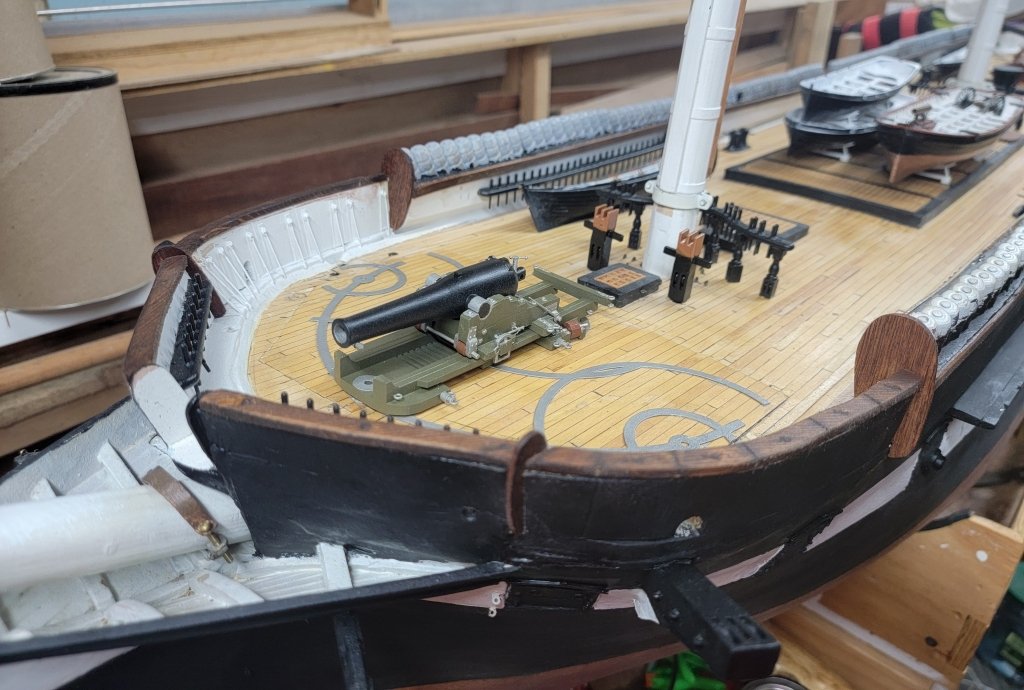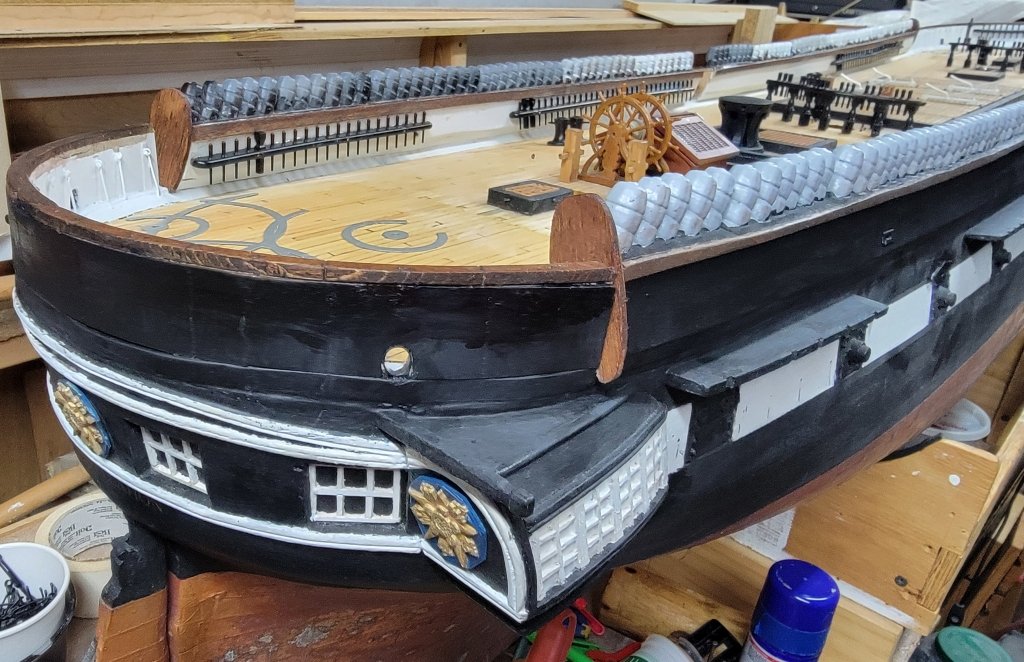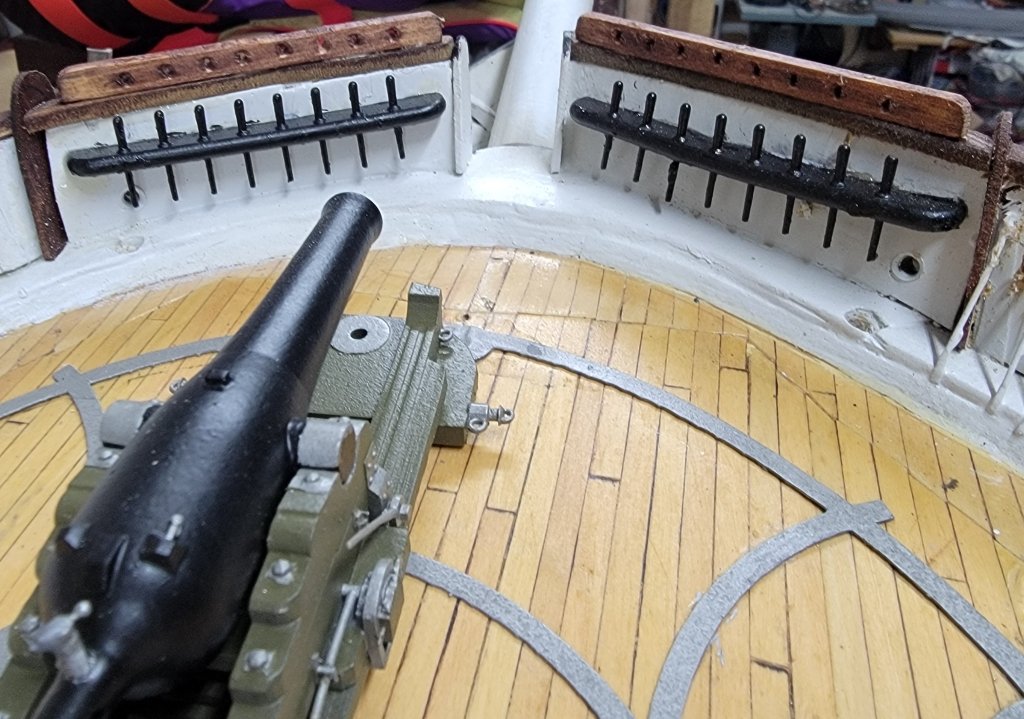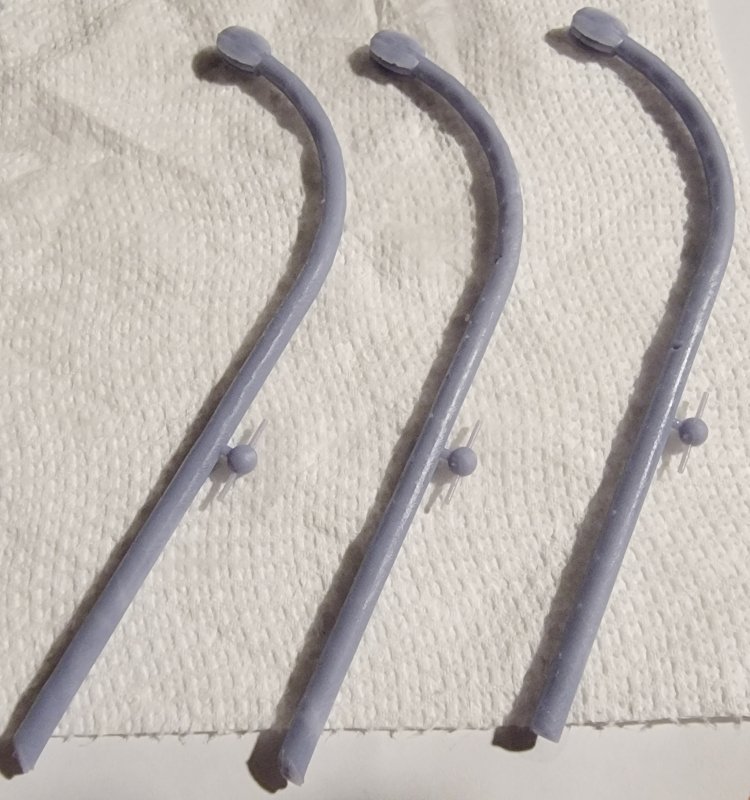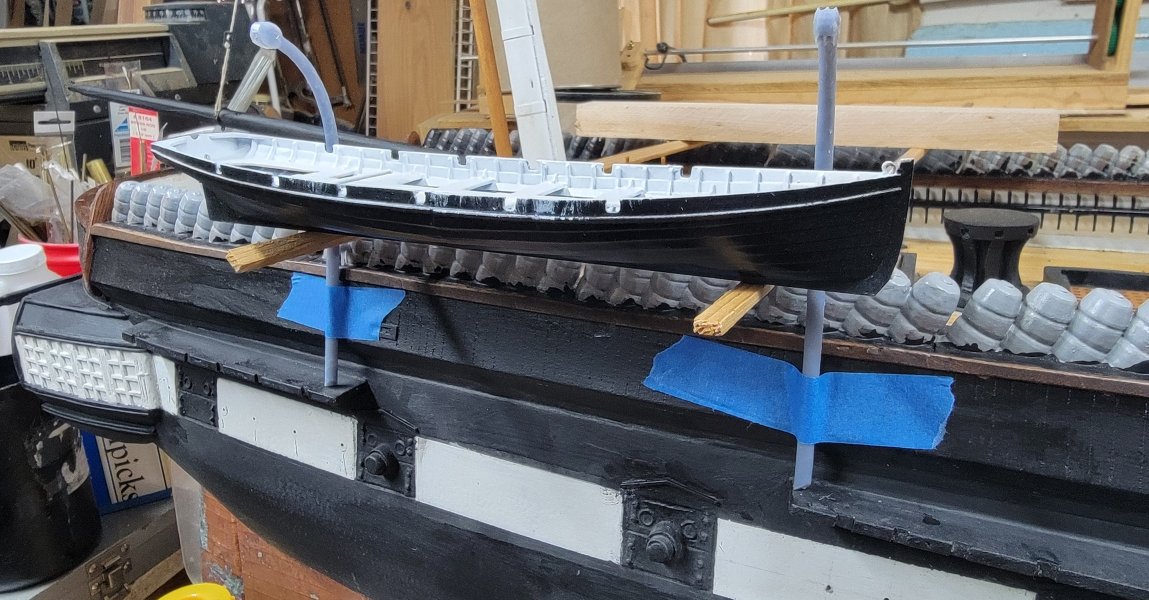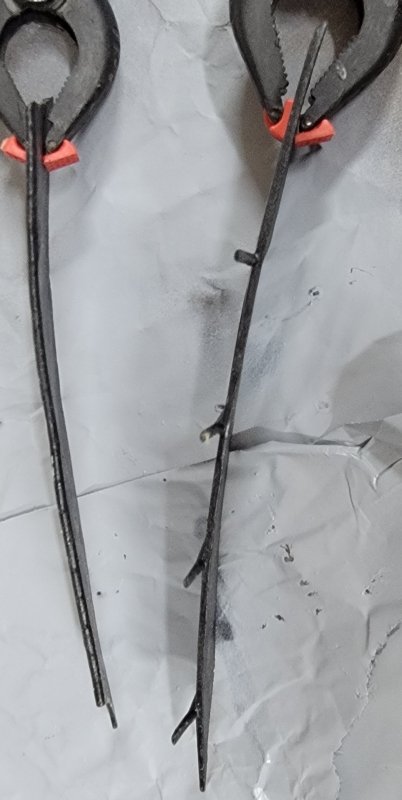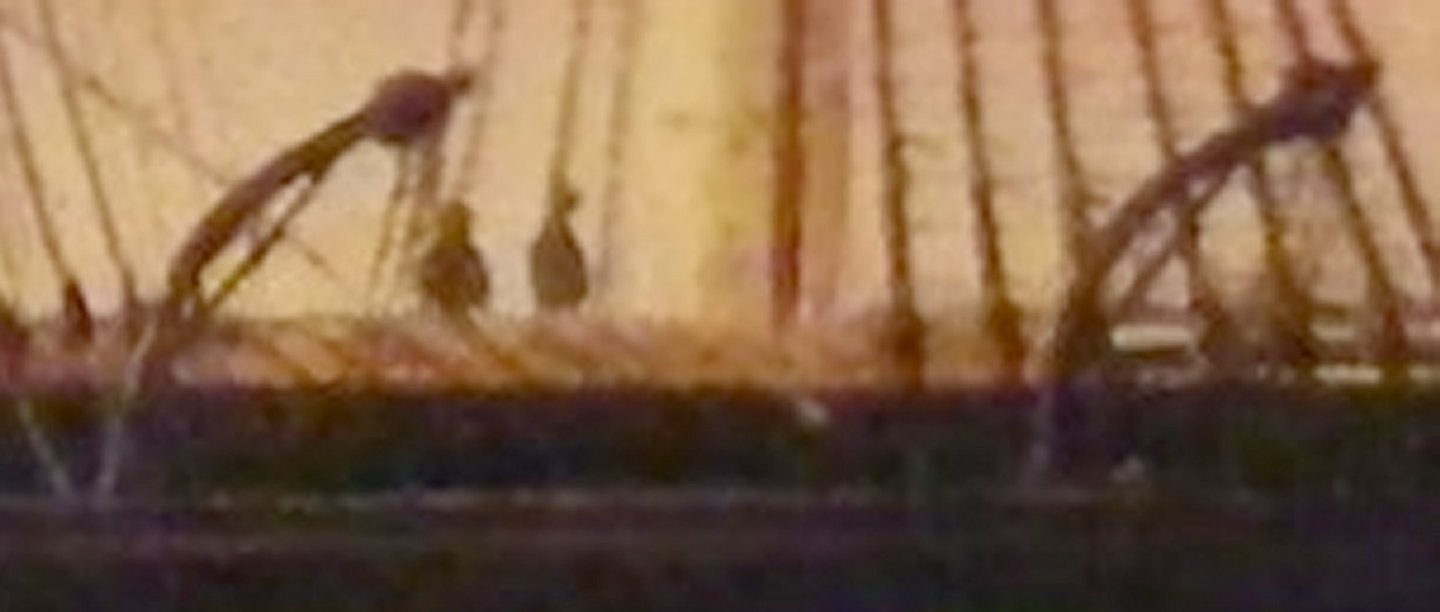-
Posts
874 -
Joined
-
Last visited
Content Type
Profiles
Forums
Gallery
Events
Everything posted by JerryTodd
-
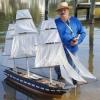
Possibilities of a visual reference for sail configurations
JerryTodd replied to N Mart's topic in Masting, rigging and sails
John Harland's Seamanship-in-the-Age-of-Sail https://www.amazon.com/dp/1472982371/ref=olp-opf-redir?aod=1&ie=UTF8&condition=ALL -
A long time ago, the Naval Academy had the Macedonian figurehead scanned to create a 3D model. The people that did the scan found my, and my Macedonian model and offer to 3D print one for me for $250. I couldn't justify $250 for a 2 inch tall bit of plastic, so I declined. Years later, having my own 3D printer, I contacted these people hoping to may get a file I could accurately scale and print. They replied after several attempt to contact them, that they could not distribute the file because it was US Navy property. Then I found it posted on a public site, not downloadable, and with no contact information. Still there: https://sketchfab.com/3d-models/usna-macedonian-monument-uwSAs3DI5gtIRlQtrtFYfUcJbp6 Constellation's been without her head ornamentation for some time now. Figuring they're looking to replace it with reproductions and would have it scanned much how the USNA did with Macedonian's figurehead, I contacted Historic Ships Baltimore to inquire if that's the case, if so, was there a chance of getting copies of the files, and explained why I was asking. In short, the answer was "I don't know, but I presume NO." Out of curiosity, I checked my bookmarks to see if the Macedonian figurehead was still on SketchFab, and it was. Interestingly, on the right column was a "Billet_head" posted by the same Direct Dimensions only a month ago! Well if it isn't a scan of Constellation's billet-head, but wait, there's more... Going to their Sketchfab page, to see all their 3D model uploads, I found scans of Constellation's trail-boards! None of this is downloadable, and there's still no contact information, so... Billet-head: https://sketchfab.com/3d-models/billet--head-3mill-mm-d1422e4df6454a3dbea26ea5058d7109 Trail-boards: https://sketchfab.com/3d-models/us-constellation-filligree-43b0610e75c5460ea3661a33b92a79ec There's functionality in the Blender software to basically make a contour model from a shaded image, just like these. I hope using the best screen-shots I could manage will allow me to use that feature to finally produce Constellation's head ornamentation.
- 553 replies
-
- sloop of war
- constellation
-
(and 3 more)
Tagged with:
-
Put ledgers, clamps, cleats, or whatever term is correct in this situation, in the head and made new templates from chipboard From which I modeled and printed new grates.These had a tendency to try to curl, so I attached wood strips to the underside to resist that. They then got primed and painted. There's vertical rub rails on the hull's side. In the 1856 portrait, I con only verify 3 at the main hatch, though more show up in photos from 1879 on, when she carried more boats as a training ship. I'm only adding the three per side I can verify. These were cut to shape to fit the hull, rather than try to spring a straight stick into place, and pinned with 1/16" brass rod; then they got some quick paint. The hull will get a proper paint job just before the chain-plates get installed.
- 553 replies
-
- sloop of war
- constellation
-
(and 3 more)
Tagged with:
-
The crew got some touch up, and I tried a "wash" on them which wasn't all I hoped it would be, but I kept it and gave the a couple of coats of clear-coat. Ivan's blue uniform was certainly slimming, he's looking quite Stan Laurel-ish in white. I made a pattern for the head gratings from chip-board, scanned it and used the image to make 3D models. Went away for the weekend, and printed them when I got home. I need to install cleats (like seat cleats in a boat) for them to sit on along the spray-screens and hull. Then I can more accurately see how the shape may need adjusting, which may mean printing again, which didn't use much resin, but did take 4 hours.
- 553 replies
-
- sloop of war
- constellation
-
(and 3 more)
Tagged with:
-

3D Naval Guns 1850s ~ 1870s
JerryTodd replied to JerryTodd's topic in CAD and 3D Modelling/Drafting Plans with Software
Took three tries before the guns printed well in 1:100. Using thicker supports seemed to do the trick. I went back to the first version I started of this gun, with the taller carriage, to finish it. I used plate #7 of LaFay's, which had measurements, rather than the model plans I had used. Both are modeled in 1:36 scale and posted on Thingiverse. Two of the delivered guns sitting on the model -

3D Naval Guns 1850s ~ 1870s
JerryTodd replied to JerryTodd's topic in CAD and 3D Modelling/Drafting Plans with Software
le canon est complet! Loaded in the slicer, re-scaled to 1:100, copied to make 7 tubes and carriages, sliced and sent to the printer. Fingers are crossed! -

3D Naval Guns 1850s ~ 1870s
JerryTodd replied to JerryTodd's topic in CAD and 3D Modelling/Drafting Plans with Software
I got this far on it before I had to do other things today and tomorrow. Comparing the tube height to the sailor figure, this carriage is definitely a better match for the model it will be living on. I'm modeling it in 1:36 scale, but I'm printing them in 1:100. Besides what I print for my friend building the model, it'll get posted on Thingiverse when it's done -

3D Naval Guns 1850s ~ 1870s
JerryTodd replied to JerryTodd's topic in CAD and 3D Modelling/Drafting Plans with Software
I found I could download the PDF of Lafay, so now I have a reference if another French gun shows up on my inbox -

3D Naval Guns 1850s ~ 1870s
JerryTodd replied to JerryTodd's topic in CAD and 3D Modelling/Drafting Plans with Software
The Lafay link goes to the same carriage that I made, which I'm thinking is for a smaller gun, abiet very similarly shaped; but Douglas shows... which specifically says is for the gun I'm doing, so I think I'm going that route. Thank you very much Lieste, for pointing out a document I already had -

3D Naval Guns 1850s ~ 1870s
JerryTodd replied to JerryTodd's topic in CAD and 3D Modelling/Drafting Plans with Software
As usual, I have very few clues what the carriage for this gun would look like, so I have to conjecture it. This image is part of a set of drawings of the L'Agile (I think) which was a later ship. The drawing is 1:100 scale but there's no reference on the portion I got, so who knows what "scale" it might be. I modeled the carriage to this drawing and wound up with the tube six feet in the air; that couldn't be right, so I scaled the carriage down to the height of my 8 inch shell-gun. This is still top-heavy to my eye, but I don't think it would have been the low-slung Marsilly the IX Dahlgren had 10+ years later. I'm gonna dig around some more before I call this one done. -

3D Naval Guns 1850s ~ 1870s
JerryTodd replied to JerryTodd's topic in CAD and 3D Modelling/Drafting Plans with Software
I'm still looking for data on the 68# smooth-bore's carriage, without any luck. I contacted the folks at HMS Warrior to see if they had drawings for what was on the ship, but they said their system was hacked and a lot of data was lost. Recently, I was asked to do a Canon-Obusier of 80 pounds for a 1:100 scale model of the French L'Orenoque (1848). I modeled it in 1:36, and will scale it down in the slicer to print at 1:100. The carriage is two-truck type, and I'm working on that now. -
Print a few more stock figures, but only 7 came out. In the meantime I altered a couple of others; I put straw hats on two, and changed a rammer to a sponger. I apparently made the brims too thin, and they didn't print well, so I made new brims from paper, and painted them in resin from the printer, then zapped them with UV to plasticize them. Painting then commenced on this batch of 15 crew who will all be in white jumpers. I got to fiddling with the davits again by mocking up a brace with chipboard; thinking that would work, applied it to the 3D model, as well as putting a proper double-block on the end, with a ring. I printed a pair to test, and 6 hours later, I'm pretty happy with the results.
- 553 replies
-
- sloop of war
- constellation
-
(and 3 more)
Tagged with:
-
All the figures I have are now painted. Not my best work, but I'm not my best self anymore either 😕 I think I got a decent shade for the Black fella,and the rest are the darkest "fleshtone" I have without darken it more. I need to modify several poses to get men climbing the rig, standing on foot-ropes. sitting, squatting, and so on. Also, I want to put straw hats on a few I also have one officer to try to work into 3 or 4 poses. Then there's the Marines, I want 6 or 8 in different poses standing and sitting on the main hatch cleaning their gear.
- 553 replies
-
- sloop of war
- constellation
-
(and 3 more)
Tagged with:
-
Welcome aboard!
-
While I figure out how to deal with installing the metal braces the support the pin-rails on the bulwarks, I got my brain into something else; painting the crew figures I'm using acrylics, but while I have half-a-dozen "flesh tones," I didn't have any white, black, or blue, so I ordered some and set about painting hands and faces. That wasn't much, but it did make a big change from the shadows they used to be. Sunday the paint arrived and I got right to it, based mostly on these images, only one is actually IDed as American. I painted about half the figures I have, including Ivan*, who's gonna remain "clean shaven" from here on. I ordered more paint for a few hair colors, and things like casks, and buckets. * Ivan's explained back in post #49
- 553 replies
-
- sloop of war
- constellation
-
(and 3 more)
Tagged with:
-
The port-side screen is in, laced-up, and both got painted inside-and-out. I have to put in the seats, and some gratings to be "done." But the sheer runs the full length of the boat now.
- 553 replies
-
- sloop of war
- constellation
-
(and 3 more)
Tagged with:
-
Thank you Ban, They are very rough, I just slapped a double block on a bent pole. I think that knob at the end may be an acorn? I am working on a more rounded block for it that looks like it belongs.
- 553 replies
-
- sloop of war
- constellation
-
(and 3 more)
Tagged with:
-
I bent and soldered some 1/16" brass rod in a jig made of scraps to make frames for the spray-screens. The jig didn't fair well, but the frames came out fine. I flattened the legs to give a better glue surface, and bent them to the needed angle. They got installed in the head with CA, and then I a coat of 5-minute epoxy over them. I cut some gray Supplex from the 2 yards I have for Macedonian's sails; glued and hemmed in strips of wood for the bottom, and the aft end, using the 3D printed version to get the angle and length right. The bottom was CAed to the head-rail and the aft end to the hull. The loose portion was pulled over the frame and CAed in place. Once I get the other side to this point, I'll lace them to the frame with Dacron sail thread and brush on another coat of paint. In the painting I'm basing the model on, of the ship in Naples in 1856 by Tamoso de Simone, the ship's at anchor with her boats away, so this is how her quarter-boat davits are show. I have yet to find a painting, a photo, or a model that depicts this style of davit. My previous try was nothing like this, so I tried again and wound up with this: These didn't print well, two of them actually failed completely, but there's enough here to see if they look right. I'm satisfied they look like the silhouettes in the painting, and that's about it. There's no tackle going into the rig for raising or lowering them. I assume they rotate in sockets on their bases and probably have some sort of brace attached to the bulwark, cause just sitting on the channel isn't going to hold them up; also I can't see in the painting that they extend below the channel to be supported by the hull. Fortunately, davits will be about the last thing that gets installed, so I have time to ponder this some more before then.
- 553 replies
-
- sloop of war
- constellation
-
(and 3 more)
Tagged with:
-
I made all new, thicker, end-boards and installed them, which required opening up the space so they'd fit. Then I added a fairlead log at the bows. Looking though photos to see what this looked like, I noticed the ship now doesn't even have pin-rails up here. Looking at installing the spray-screens up at the head, the 3D printed ones, because of their thinness, curled. I think they're likely to break being forced flat and installed under tension like that, so I think I'm going to brush up my soldering and make a metal frame covered with painted cloth, basically they way the real one was done. Though they'll probably be one of the last things to get installed, but I've been trying to figure out the quarter davits for some time. What I can find images of are not what I see in the portrait, so I popped out this little experiment. These aren't the final product, and the more I look at them, they aren't even close, so it's back to the drawing board.
- 553 replies
-
- sloop of war
- constellation
-
(and 3 more)
Tagged with:
-
FYI: The miter-cut "flying jib" (jib), where the panels meet at a 90° diagonally across the sail, did not come into use until the late 1860s. There may have been a "miter-band", or reinforcing cloth across the sail over the panels in line with the pull of the sheets, but the sail would have otherwise been cut the same as the "jib" (forestays'l) they show.
About us
Modelshipworld - Advancing Ship Modeling through Research
SSL Secured
Your security is important for us so this Website is SSL-Secured
NRG Mailing Address
Nautical Research Guild
237 South Lincoln Street
Westmont IL, 60559-1917
Model Ship World ® and the MSW logo are Registered Trademarks, and belong to the Nautical Research Guild (United States Patent and Trademark Office: No. 6,929,264 & No. 6,929,274, registered Dec. 20, 2022)
Helpful Links
About the NRG
If you enjoy building ship models that are historically accurate as well as beautiful, then The Nautical Research Guild (NRG) is just right for you.
The Guild is a non-profit educational organization whose mission is to “Advance Ship Modeling Through Research”. We provide support to our members in their efforts to raise the quality of their model ships.
The Nautical Research Guild has published our world-renowned quarterly magazine, The Nautical Research Journal, since 1955. The pages of the Journal are full of articles by accomplished ship modelers who show you how they create those exquisite details on their models, and by maritime historians who show you the correct details to build. The Journal is available in both print and digital editions. Go to the NRG web site (www.thenrg.org) to download a complimentary digital copy of the Journal. The NRG also publishes plan sets, books and compilations of back issues of the Journal and the former Ships in Scale and Model Ship Builder magazines.





